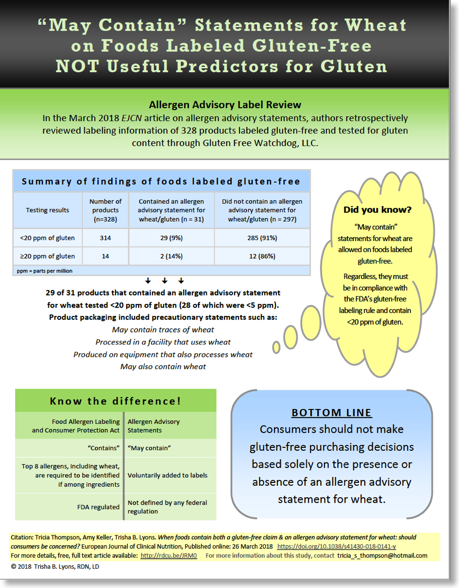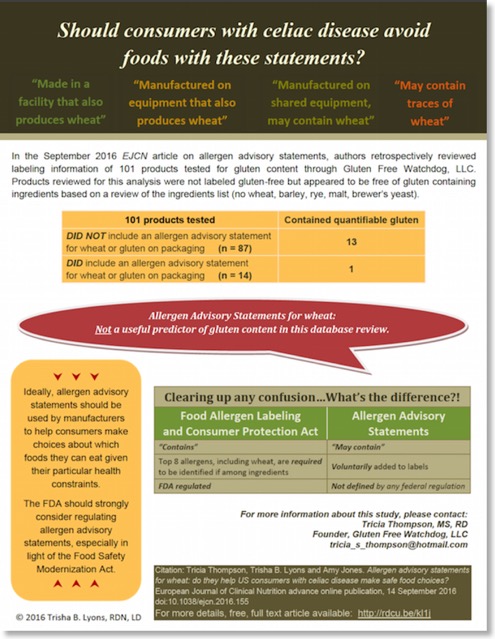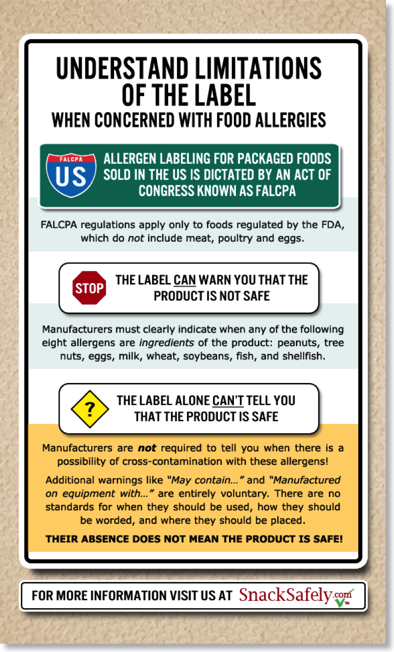May Meeting 2023 - Crackers
The number of gluten-free cracker/snack options on the store shelves today is amazing!
As you’ll see, we didn’t lack for options.
Also surprising - how many are GFCO certified. When selecting products, I was not focusing on that aspect.
Simple Mills - Veggie Flour Pita Crackers Himalayan Salt (GFCO Certified) & Almond Flour Farmhouse Cheddar (GFCO Certified)
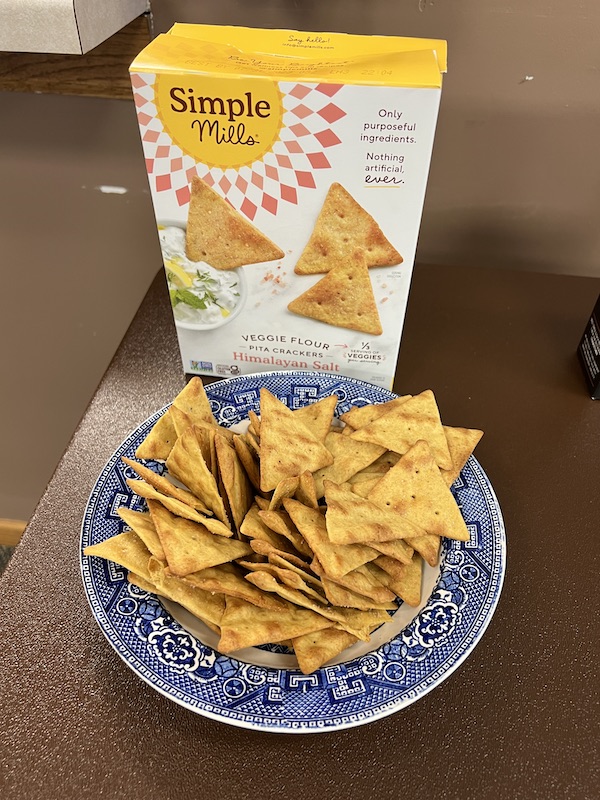
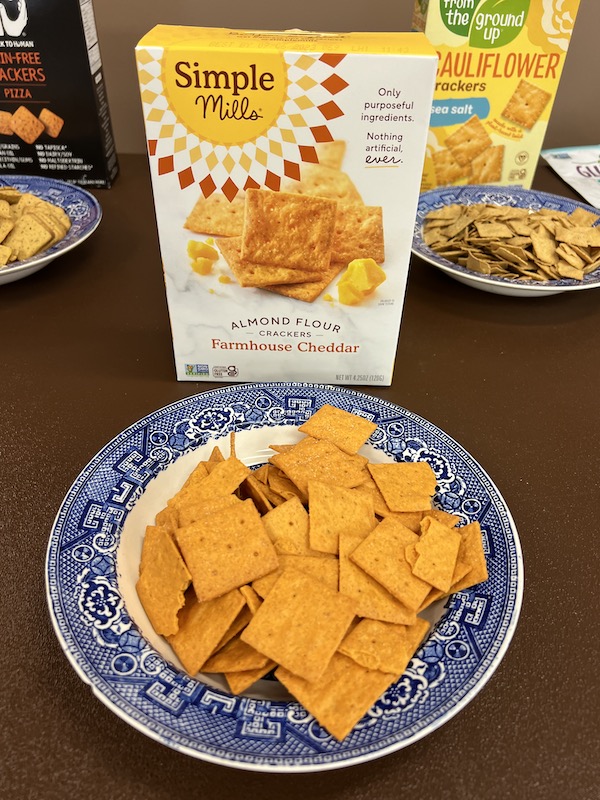
Simple Mills products are a favorite in our house. First, we were attracted to the taste and texture, then, their unique selection of flours and ingredients.
Almond flour - Great!
Vegetable Flour Blend (Sweet Potato, Parsnip, Celery Root), Seed Flour Blend (Sunflower Seeds, Flax Seeds) - Amazing!
Seed & Nut Flour Blend (Watermelon, Cashew, Sunflower, Flax)
Watermelon seed flour? Who does this?
Simple Mills…
If great quality products weren’t enough, their mission and food philosophy are commendable.
Our food philosophy
Since our founding, Simple Mills has been driven by our mission to provide delicious, nutritious foods made with purposeful ingredients and nothing artificial, ever. We make products that go beyond “free from” to “for more”. Our products are not just lacking what we look to avoid (like artificial ingredients), but include more of what we want. And that's purposeful, nutrient-dense, delicious ingredients and nothing artificial, ever.
I invite you to check out their webpage on Regenerative Agriculture.
Use Simple Mill’s Store Locator to find their products.
Farmhouse Cheddar crackers where purchased at Webster’s Foods and the Pita crackers at Woodman’s in Sun Prairie. Woodman’s and Festival Foods have a larger variety of Simple Mills products.
Hu - Grain-Free Crackers - Pizza, Sea Salt, Everything (GFCO Certified)
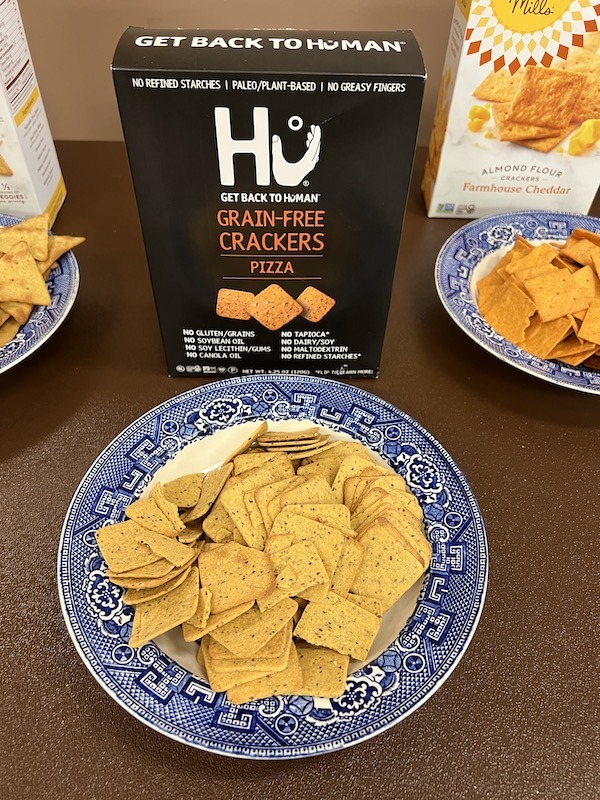
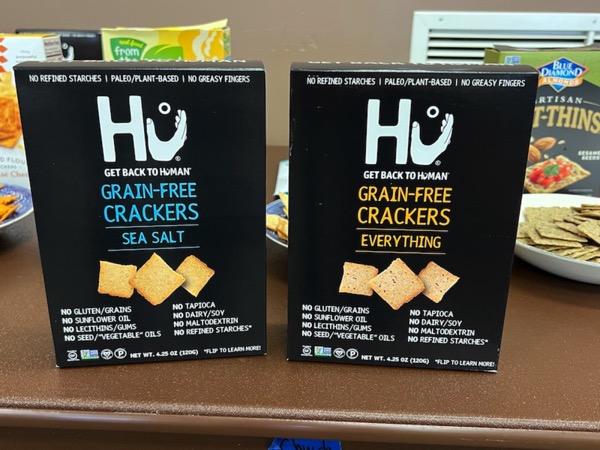
From our Chocolate themed meeting, we know that Hu has some great chocolate, but I didn’t know they made crackers too!
No gluten/grains, sunflower oil, lecithin/gums, seed/vegetable oils, tapioca, dairy/soy maltodextrin, refined starches.
Like Simple Mills, the folks at Hu are taking a unique approach to food.
Our Mission
We obsessively vet every ingredient to unite unbeatable taste with unmatched simplicity. We help people get back to human.
Use Hu’s Store Locator to find their products.
I found the Pizza crackers at Woodman’s in Sun Prairie.
Special thanks to Kimberly for bringing and sharing her Sea Salt and Everything crackers.
From the Ground Up - Cauliflower Crackers Sea Salt (GFCO Certified)
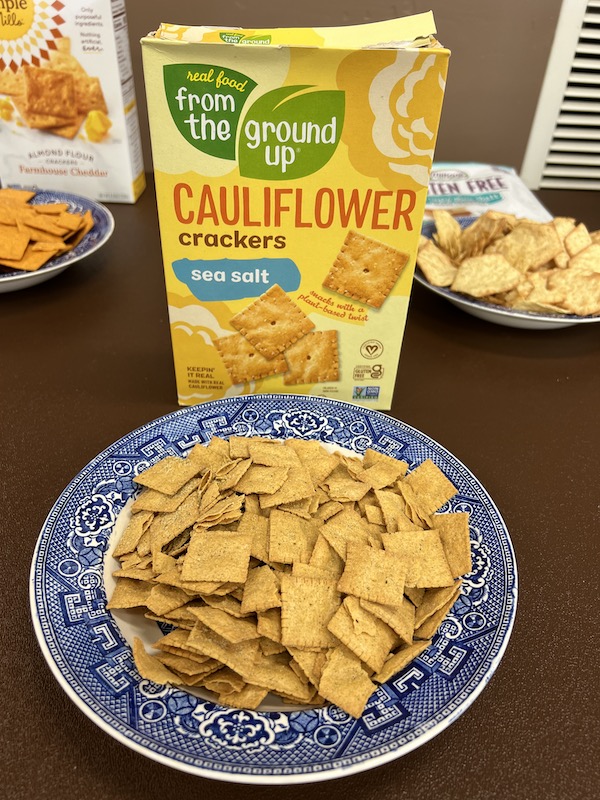
Cauliflower
I thought these crackers were fine, but Peggy wasn’t pleased with the overt cauliflower taste.
From the Ground Up
Milton’s Craft Bakers - Crispy Sea Salt Baked Crackers (GFCO Certified)
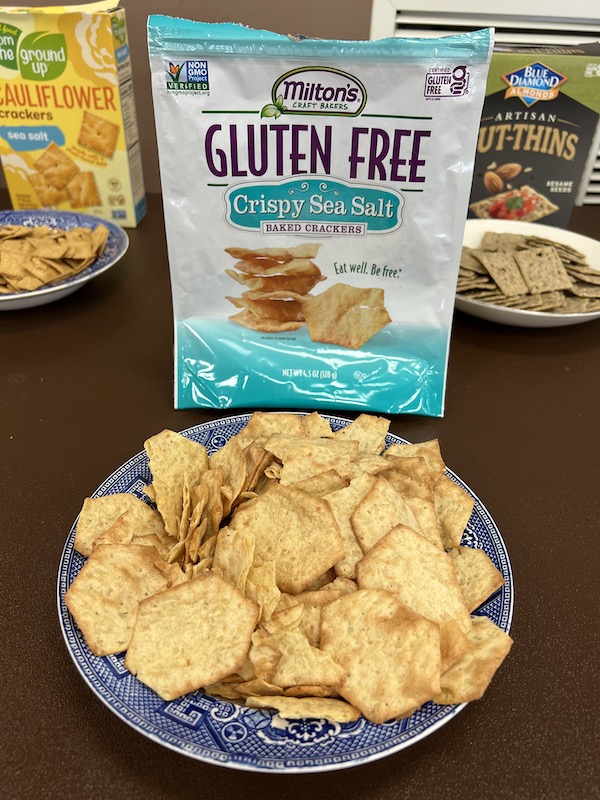
We’ve tried a number of Milton’s products and like them. They had me a Sea Salt…
Milton’s Product Locator
Blue Diamond - Artisan Nut-Thins Sesame Seeds (GFCO Certified)
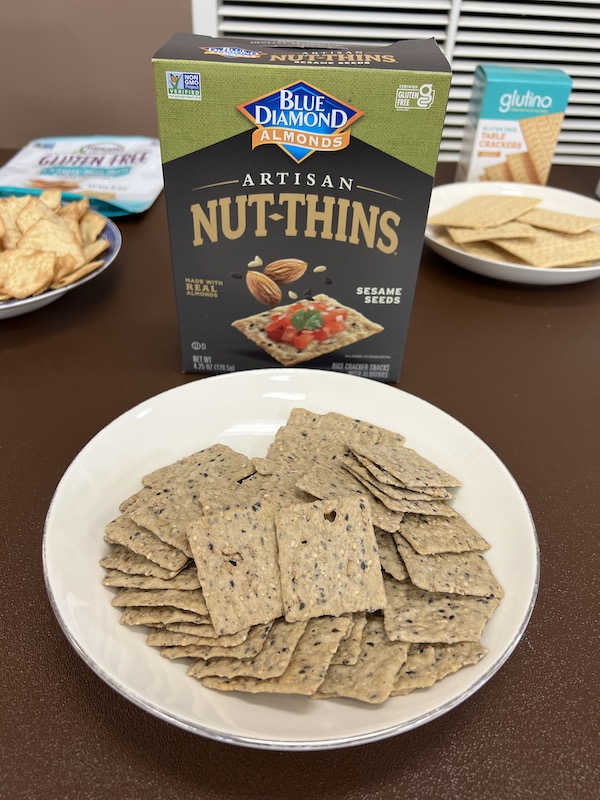
These guys are as crunchy as Mary’s Gone Crackers!
Blue Diamond Product Locator
Glutino - Table Crackers (GFCO Certified)
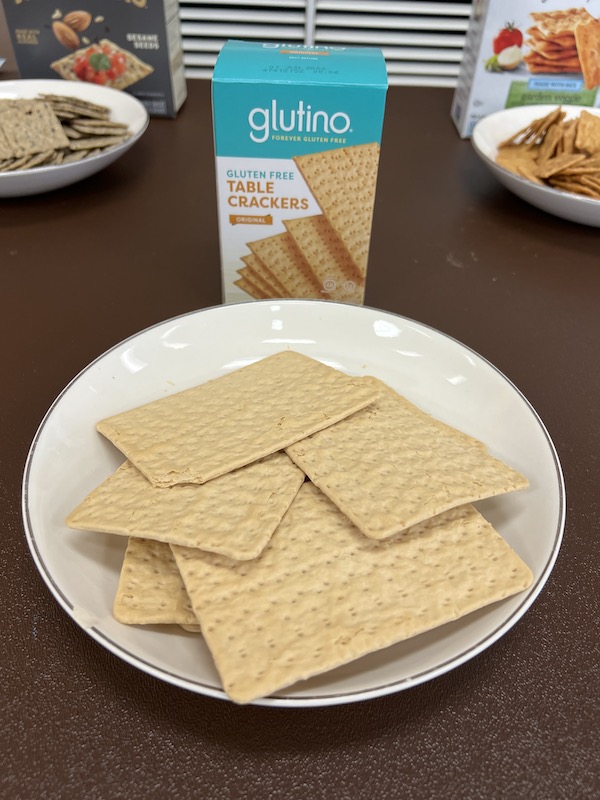
Glutino has been a well-known and trusted manufacturer of gluten-free foods since 1983.
Glutino - Multigrain Crackers (GFCO Certified)
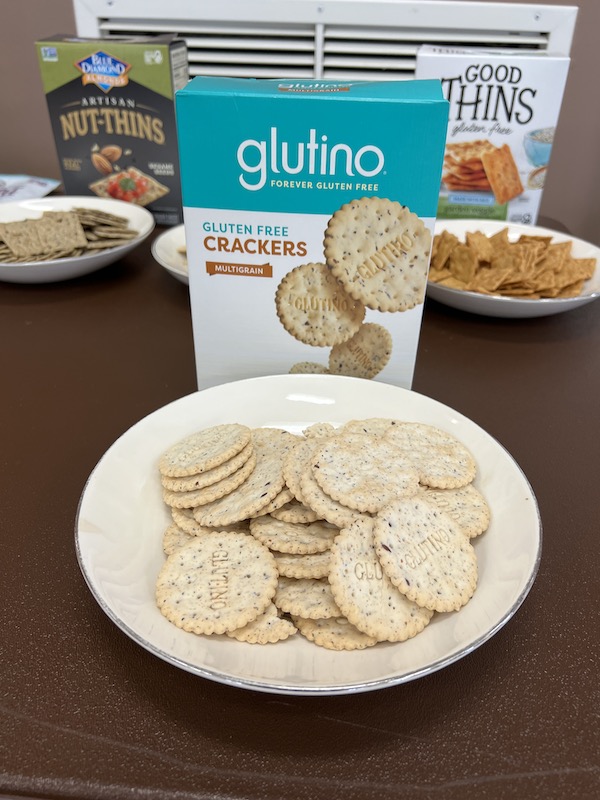
If you’re looking for neutral-flavor crackers, these would be a good choice. Like many gluten-free products, these crackers are a bit fragile. I’d like them to be a touch more saltier.
Glutino Product Locator.
Good Thins - Gluten-Free - Garden Veggie (GFCO Certified)
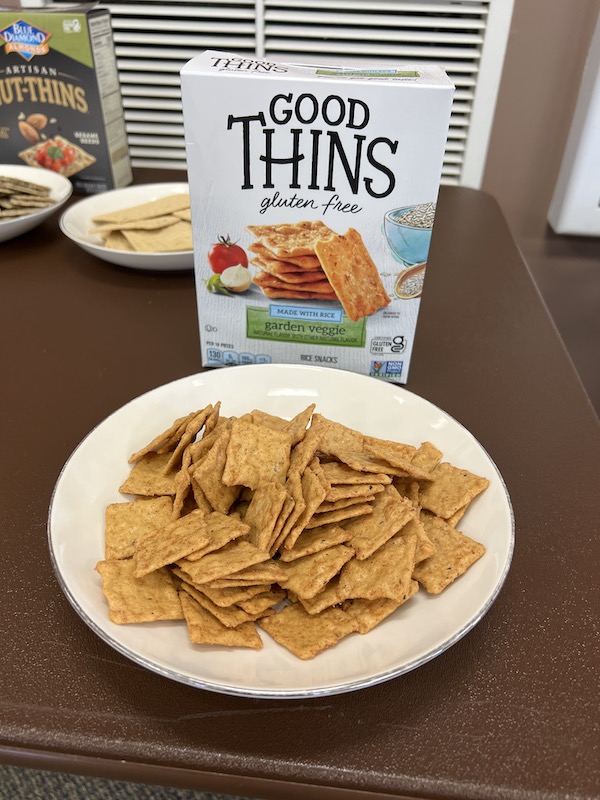
Good Thins are a favorite of mine. They offers up eight different flavors.
Good Thins Product Locator
Vana Life Foods - Chipotle Superfood Bowl (GFCO Certified)
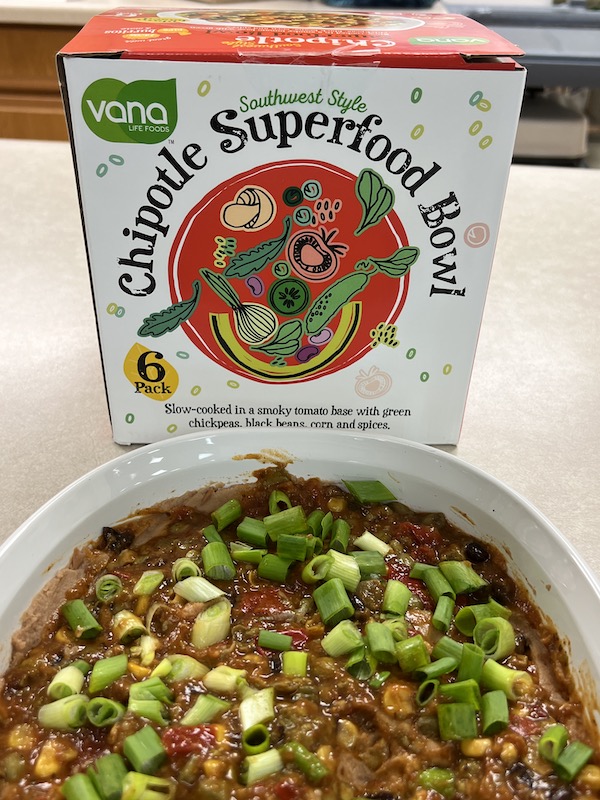
Southwest Style, indeed. This was really good with chips!
Vana Life Foods Product Locator
Thank you, Kimberly for sharing this wonderful product!
Mary’s Gone Crackers - Original Crackers (GFCO Certified)
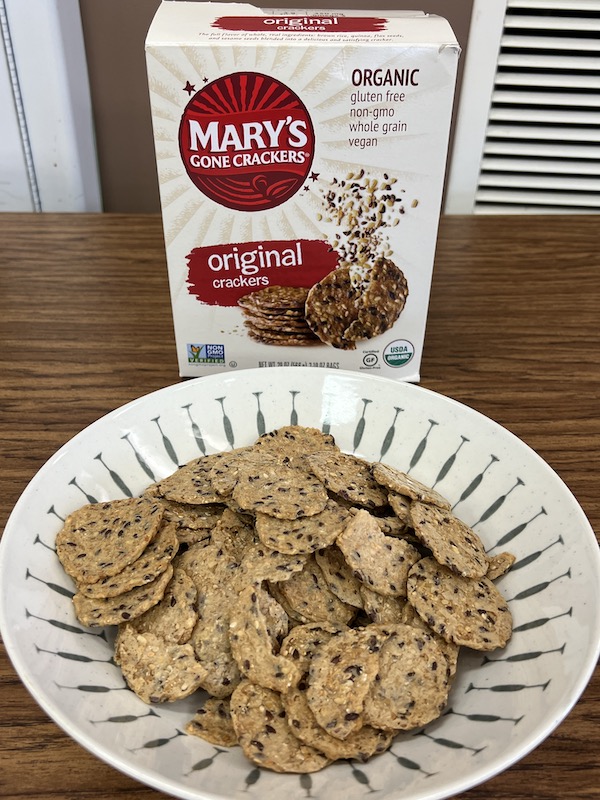
“PASSIONATELY, UNABASHEDLY & IRRATIONALLY OBSESSIVE ABOUT CRISPY, CRUNCHY SNACKS™”
They indeed are crispy and crunchy!
I remember Mary’s Gone Crackers from the early days. In fact, MGC was founded in 1994 by Mary Waldner, a practicing psychotherapist. After a lifetime of sickness (43 years), she was diagnosed with…celiac disease.
Mary’s shares her story in “Put a Fork In It’s” podcast. As in many cases, celiac disease was the driving force behind this endeavor. Very enlightening and inspiring! I think you’ll be able to relate to Mary and her story. I invite you to take a listen: https://bit.ly/43T0z3g
Mary’s Gone Crackers Product Locator.
Thank you, Kimberly for sharing this wonderful product!
Siete - Grain-Free Tortilla Chips - Sea Salt (GFCO Certified)
Primal Kitchen - Grain-Free Tortilla Chips - Sea Salt (GFCO Certified)
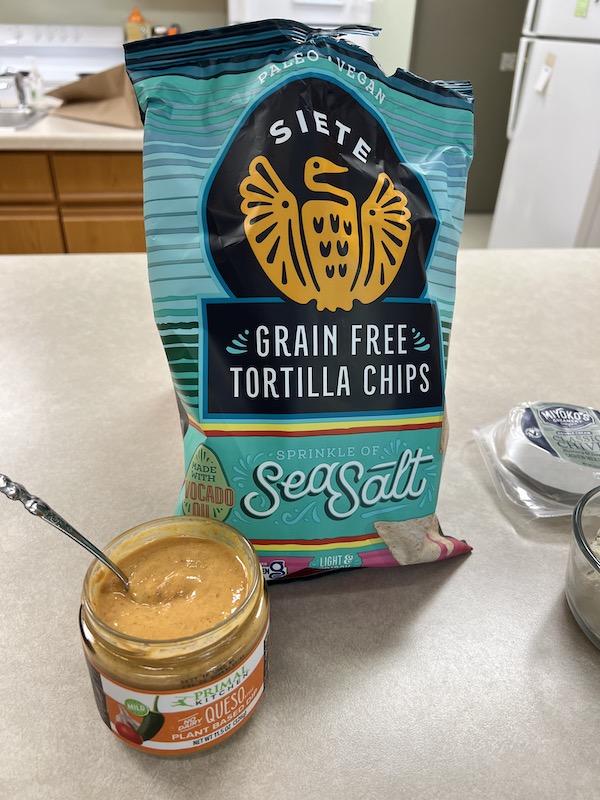
Crispy, crunchy…they get my vote.
Siete, yet another company born about of illness and an effort to improve health.
Siete Product Locator (Store & Restaurant).
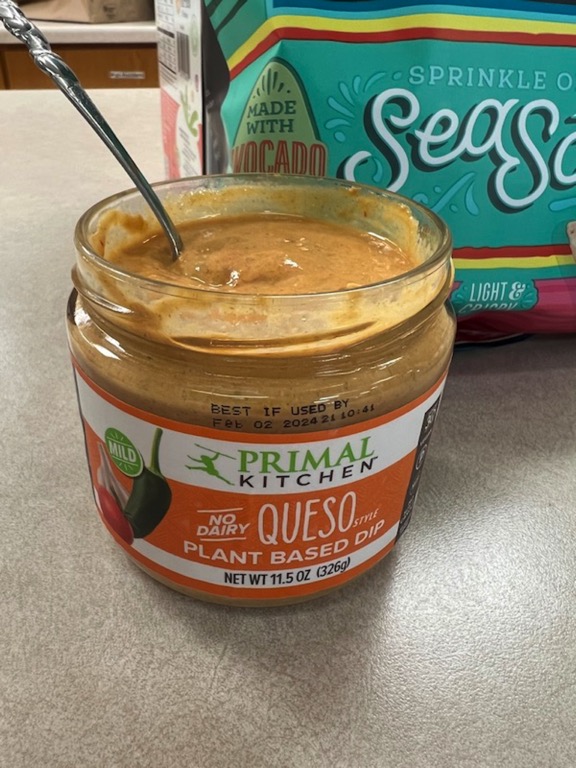
You probably wouldn’t know this queso was plant-based. This product shows a vast improvement in dairy-free options.
Primal Kitchen was founded by Mark Sisson, New York Times bestselling author, ex-endurance athlete (marathon and Ironman) in 2015. Through his blog, MarksDailyApple.com, he has been sharing information on nutrition and the benefits of fat and protein for over a decade. It is a favorite in the, low-carb, Whole30, gluten-free, Paleo, Keto, and ancestral diet camps. I’ve loosely followed him for many years. Primal Kitchen is currently owned by Kraft Heinz.
Primal Kitchen Product Locator
Thank you, Sue for sharing these tasty products!
Recipe - Beer Cheese Dip (Note: Orignial recipe requires GF conversion - GF beer)
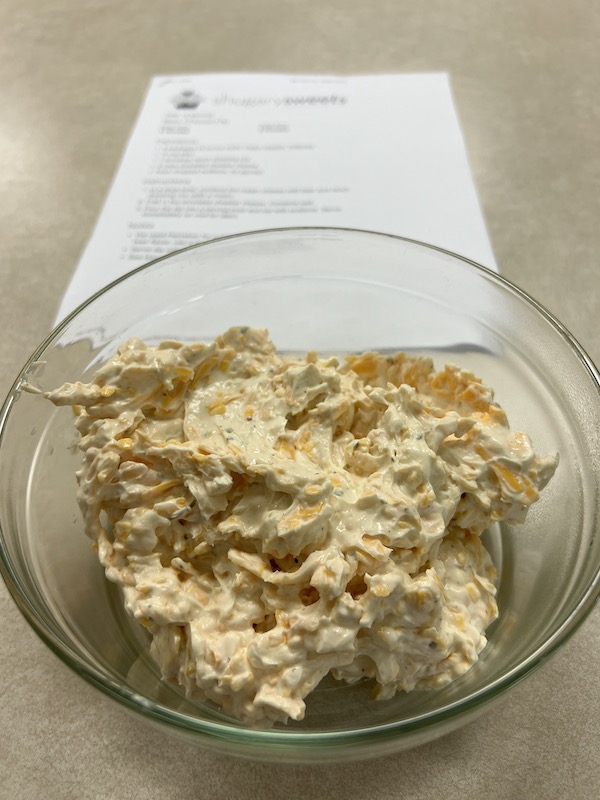
This no where near dairy-free!
2 packages cream cheese, softened 8 ounce each
⅓ cup gluten-free beer (Red Bridge)
1 envelope ranch dressing mix (Hidden Valley Ranch Seasoning Mix - labeled GF)*
2 cups shredded cheddar cheese
Fresh chopped scallions for garnish
Combine the cream cheese, GF beer, and ranch dressing mix with a mixer.
Fold in the shredded cheese
Top with scallions. Serve immediately (or chill for later).
*The HV Food Products Company will label any gluten containing grains. They adhere to Good Manufacturing Practices in place to mitigate allergen cross-contact.
Do Hidden Valley® dressings contain gluten? Most of our products do not contain gluten. Products and ingredients made from grass-related grains containing gluten — notably wheat, rye and barley—will be clearly listed in the ingredient statement on the package label per new FDA guidelines. If the product does not contain wheat, rye, or barley, it probably does not contain gluten. Only products that have been verified to be gluten free will have a "Gluten Free" statement. However, not all products that are gluten free will have this statement while we are in the process of updating our labels. Please always refer to the ingredient statement on package labels or contact us for clarification. Please always refer to the ingredient statement on package labels or contact us for clarification.
How do you ensure your products are gluten-free? We have a program in place to support the use of the “Gluten Free” statement. Products listed as “Gluten Free” undergo scheduled testing. All suppliers provide assurance that there are no ingredients that contain or are derived from gluten-containing grains. Our products are manufactured in facilities with stringent allergen control programs to prevent cross contamination.
Bunky’s Hummus
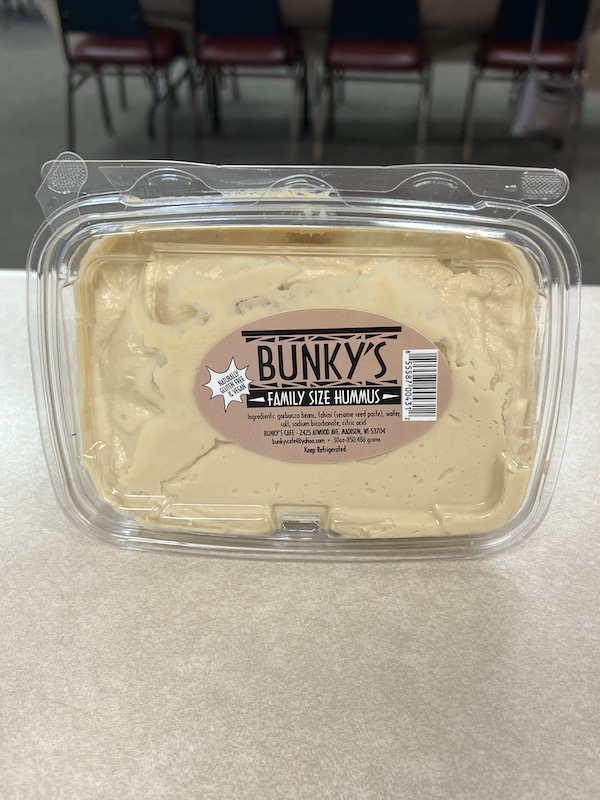
Smooth and creamy, this is some of the best - authentic hummus.
Why Bunky’s? Because their products are worth the drive to Madison. In the early days of my gluten-freedom (2007/2008), we discovered Bunky’s Cafe. A small, eclectic little place with great food, great owners, and staff. You could always count on Teresa and Rachid for safe and delicious food. All but one or two of their menu items could easily and safely made gluten-free upon request. Definitely a favorite restaurant in the gluten-free community.
In 1930, Vito (“Bunky”) and Ninfa Capadona created one of the first Italian restaurants in Madison - the go-to place for spaghetti. Years later, they were one of the first to serve pizza.
Great-grandaughter Teresa and her husband wanted to restore Bunky’s legacy with their own restaurant. Combining Teresa’s Italian heritage and with Rachid’s Mediterranean heritage - Bunky’s lived again.
Why gluten-free? As with many restaurants that accommodate their gluten-free guests, there’s a family connection. Rachid’s brother almost died due to undiagnosed celiac disease.
When Bunky’s moved into a larger building, they were able to have a dedicated gluten-free kitchen area.
In 2012, Dr. Rodney Ford, a pediatric gastroenterologist from Christchurch, New Zealand toured the United States to promote his new book, Gluten Zero Global. Dr. Ford wanted to speak in Madison and asked GIG of ECW if we could make that happen for him. We did, and guess where we took Dr. Ford and his wife Chris to eat? Yup, Bunky’s Cafe.
In 2016, they shifted gears to slow down so they could spend more time with their children. Instead of daily restaurant service, they focused on catering and wholesale sales.
Hmmmm, their dinner buffet menu says a minimum of 25 orders. Do you think we could round up 25 people for a private catered event at their location? Or 13 people willing to order another entree to take home with them?
As you can see, Bunky’s holds a special place in our hearts.
Bunky’s Product Locator.
Miyoko’s Creamery - Double Cream Classic Chive Cashew Milk Cheese (GFCO Certified)
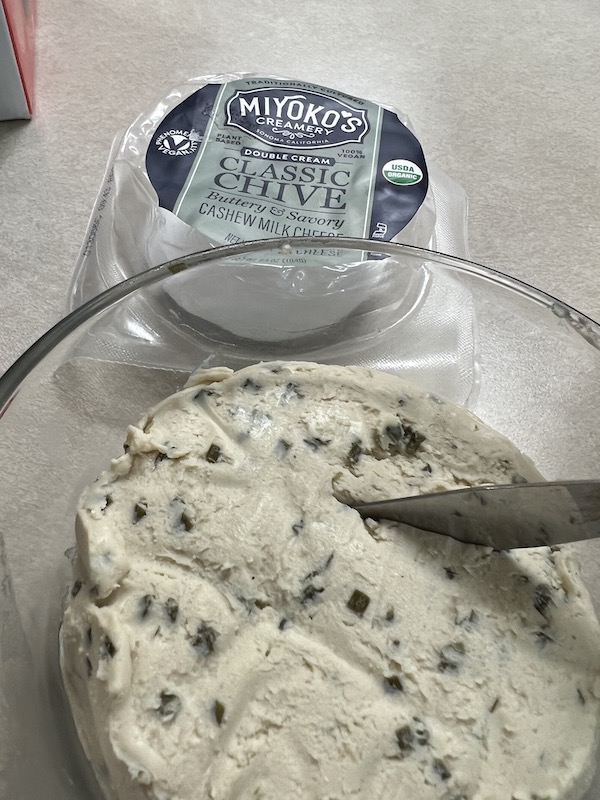
Back in the day, I was dairy-free for a short time. I have to say, much like gluten-free products, dairy-free products have come along way.
I had not heard of this brand before, but really liked this cashew milk cheese.
Miyoko has an admirable philosophy on plant-based foods, animals, restorative agriculture, and sustainability. Learn more about their mission, and check the store locator to find their products.
Thank you Sue for sharing this tasty dairy-free product!
Vines & Rushes Winery - Frontenac, Ceresco, Sweet Nolia, Marquette Rose.
Door Peninsula Winery - Sweet Cherry Wine
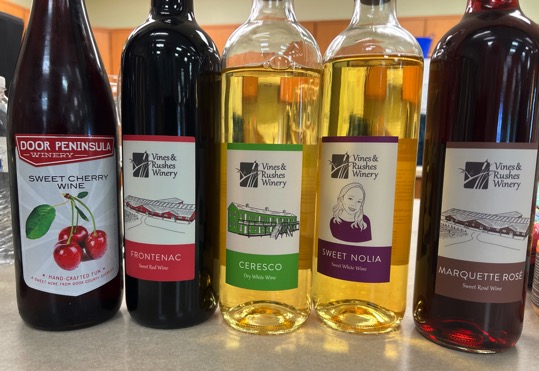
What’s crackers, cheese, chips without some wine, right?
I know nothing about wine, so I selected a few to cover a broad spectrum.
We’ve sampled the Frontenac during our first chocolate theme as the vintner suggests it pairs nicely, and I liked it. Ceresco, because my 2x Great Grandfather was one of 19 men (and one boy) who founded the experimental community called Ceresco, in 1844. Years later Ceresco dissolved and merged with Ripon (founded in 1849). Sweet Nolia is Don’s favorite. Peggy likes sweet wine, so Sweet Cherry Wine from Door Peninsula was added.
Having a local winery, made the decision easy. Even easier is having a group member who’s grand-daughter owns said winery.
Thank you to Don and Vines and Rushes Winery for your generous and lively addition to our event!

March Meeting 2023 - Pizza Party
Last year, while discussing various meeting themes, a pizza party came up. Excellent! We decided to put that idea into action.
Oh my! Over the course of four hours plus, we feasted upon ten different pizzas ranging from frozen, Take & Bake, homemade Make & Bake with pre-baked crusts, and a homemade crust from a mix. So. Many. Options.
Actually, we had eleven, but we were too stuffed to bake up the eleventh. Thanks Donna for bringing the Bellatoria Pepperoni pizza!
Eleven different gluten-free pizza options? Yep, and there are even more out there to try. My, how times have changed. If I wanted a pizza in 2003, I had to make it from scratch…as we did with most “specialty foods” back then. Looking back, I think that was a good thing for several reasons.
If pizza wasn’t enough, we had spinach salad, fruit salsa and chips, brownies, cookies from Happy Bellies! Oh, and some beer from Alt Brew, and Glutenberg. Gotta have beer with pizza.
A BIG round of thanks to everyone for their contributions to make this event a huge success. Dare I say it, I think this pizza party ranks up there with our annual picnic. Special thanks to event photographers Luann & Peggy. Y’all are the best!
Bernatello’s Foods - Bellatoria Gluten-Free Cauliflower Parmesan Crust - Roasted Vegetable with Red Pepper Alfredo Sauce (GFCO Certified) - Frozen
Bellatoria offers five different gluten-free pizzas: Cauliflower Parmesan Crust Chicken Alfredo, Cauliflower Crust Roasted Vegetable with Red Pepper Alfredo Sauce, Sweet Potato Crust Thai Chili Chicken, Traditional Crust Cheese, and Traditional Crust Pepperoni.
Fun fact: Bernatello’s is very active in the community and supports many non-profit organizations. They partnered with myTeamTriumph - WI Chapter to supply pizzas for EnduraFest - a 12hr cycling & running event held at Road America. Looking forward to this year’s event on August 11-14th, 2023. They have a dedicated GF pizza oven. Nothing better than pulling into the pits at 1:30AM to refuel with a GF pizza (I pass on the beer during the race. Maybe when I finish at 7:00AM? What…never heard of a breakfast beer? :-) ). I have to be careful not to eat too much before heading back out on the track.
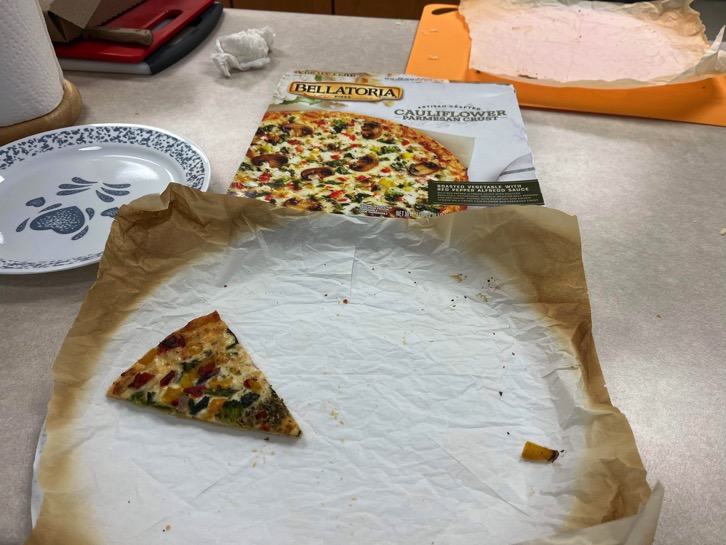
Schar Crusts - Shannon & Chris’s Margherita & Pepperoni and Black Olive Pizzas - Make & Bake
Schar, a long-time trusted name in the gluten-free community, dishes up a two-pack of ready-to-top crusts. Shannon whipped up a gorgeous Margherita Pizza with sliced tomatoes, mozzarella balls, basil leaves (sorry, no photos - only a few slices of cherry tomatoes that got left behind - it went so fast!), and Pepperoni & Sausage pizza with homemade sauce.
Thank you for reminding me just how good these crusts are…
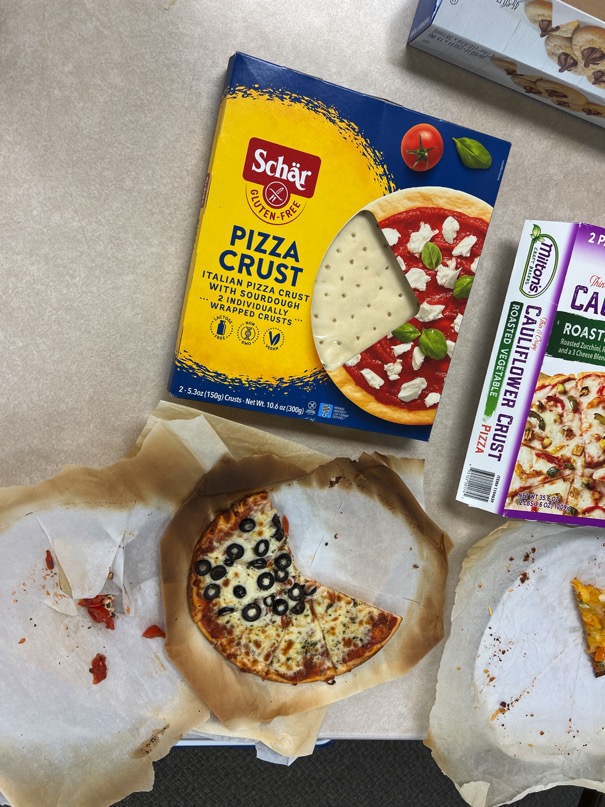
Milton’s Roasted Veggie Cauliflower Crust Pizza (GFCO Certified) - Frozen
Kimberly shared this favorite of hers, adorned with extra yellow pepper and cheese, of course! Costco is famous for their 2-packs. It’s hard not to make both of them, in hopes of having some leftovers.
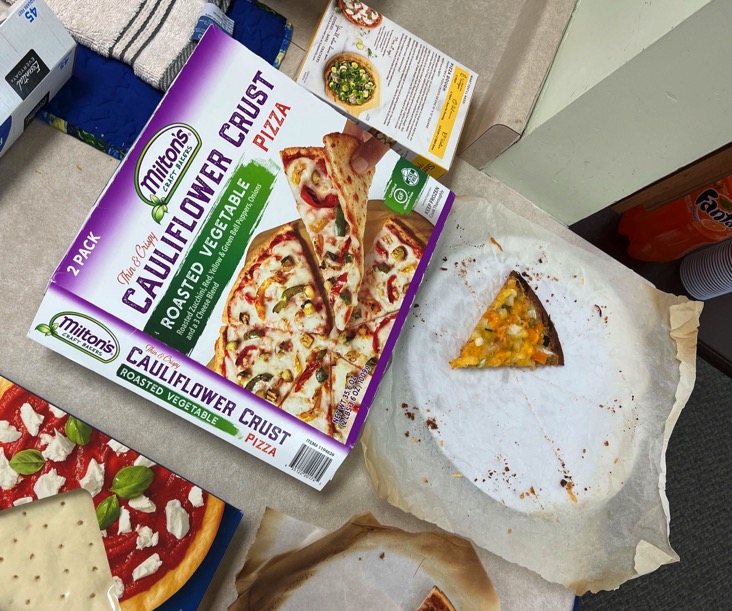
Eaton’s Fresh Pizza - 14” Cauliflower Crust with sausage and mushrooms - Take & Bake
Sue, Dennis, & Kyle brought this monster sized pie to feast upon. WOW! This is the biggest GF pizza I’ve ever seen. Eaton’s Pizza has a dedicated prep area complete with gluten-free pizza toppings. Sue reports watching them build this masterpiece before her very eyes!
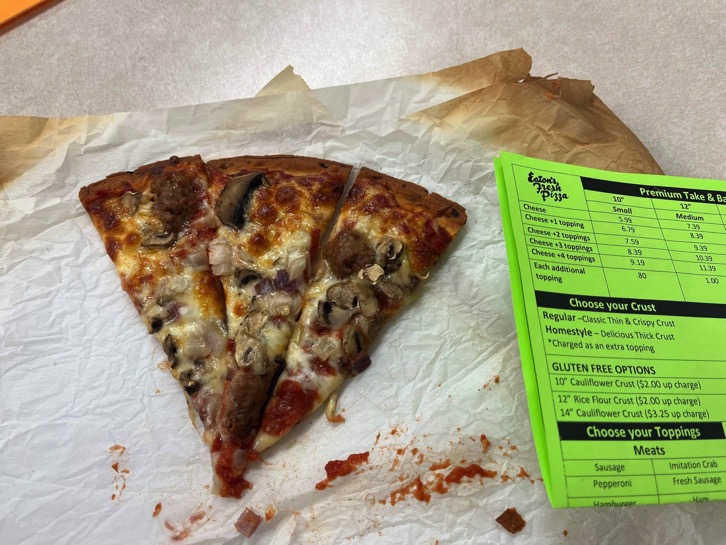
Cornflower Cafe & Ann’s Gluten-Free Bakery - Onion, black olives, artichokes, sweet peppers, and mushroom pizza, and a Sausage ‘za - Take & Bake.
Cornflower is a dedicated gluten-free environment. They do have a small dine-in area. Friday’s are pizza day at Cornflower Cafe. You call ((920) 939-2027) to place your order and they’ll have it ready for you, or if you call one hour ahead, you can dine in! If you are looking for more info on Cornflower Cafe, their Facebook Page is the best resource.
Shown here are the dwindling remnants of both pizzas. Both were gone shortly after this photo was taken.
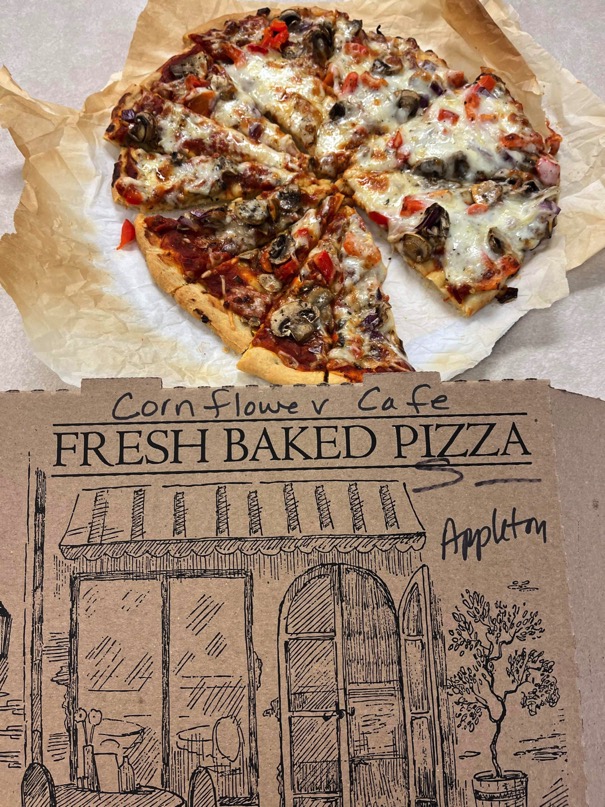
Aldi’s Veggie Cauliflower Crust Pizza - Take & Bake
Luann and Tony shared a three cheese, veggie pizza jazzed up with some additional home-seasoned sausage and fresh grated mozzarella cheese. Sorry, no pictures were obtained of this is pizza before it disappeared.
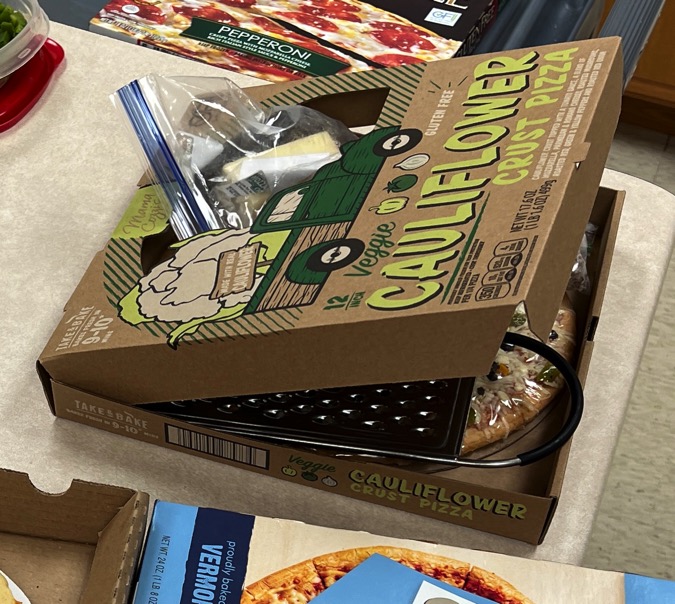
Against The Grain Three Cheese Pizza. Frozen
When Peggy was picking up the Cornflower pizzas in Appleton, she stopped at Woodman’s to see what she could find. When she told me of this one, I asked her to snag it. Always wanted to try it - this was a perfect opportunity! Against the Grain pizzas have been around for a long time and always garnered good reviews. I believe GIG of ECW members rated this highly as well. True to their name, no grains were used - tapioca starch, water, eggs, olive oil, and lots of dairy (cheese and milk).
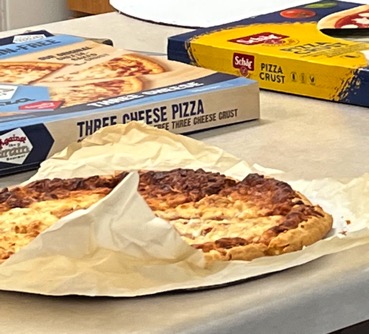
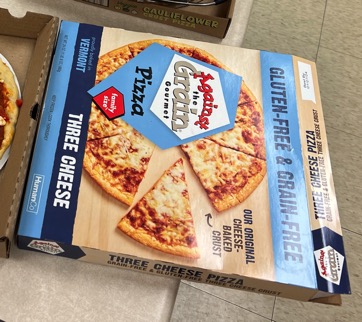
Simple Mills Almond Flour Pizza Dough Baking Mix (GFCO Certified) - Make & Bake
We couldn’t have a pizza party with all the different types of pizzas without one made from a mix. This has become my Go To mix for homemade pizza. I’ve tried several mixes over the years [Bob’s Red Mill, Chebe, and GF Jules], but I think this one has become a favorite. Due to the almond flour, the crust tends to be soft, so I’ve been tinkering with it to increase the crunchiness a bit. I’m still working on that… I think a pizza oven is called for.
In the background, you can see my favorite Dei Fratelli’s pizza sauce. It has the right amount of spice/bite I look for in a pizza sauce.
Also in the background, you can see the remainder of my sautéd veggie toppings - mushrooms, green pepper, and onion. I sauté the veggies to remove moisture to minimize crust sogginess. Not pictured: Johnsonville Mild Italian sausage, the Crystal Farm’s shredded Mozzarella cheese, or the Penzey’s Frozen Pizza Seasoning (hint - it’s not just for frozen pizzas. I added a dash to the sautéd veggies, the dough, and another dash before it went back into the oven the second time to bake the toppings), Penzey’s Granulated Garlic and Onion Powder.
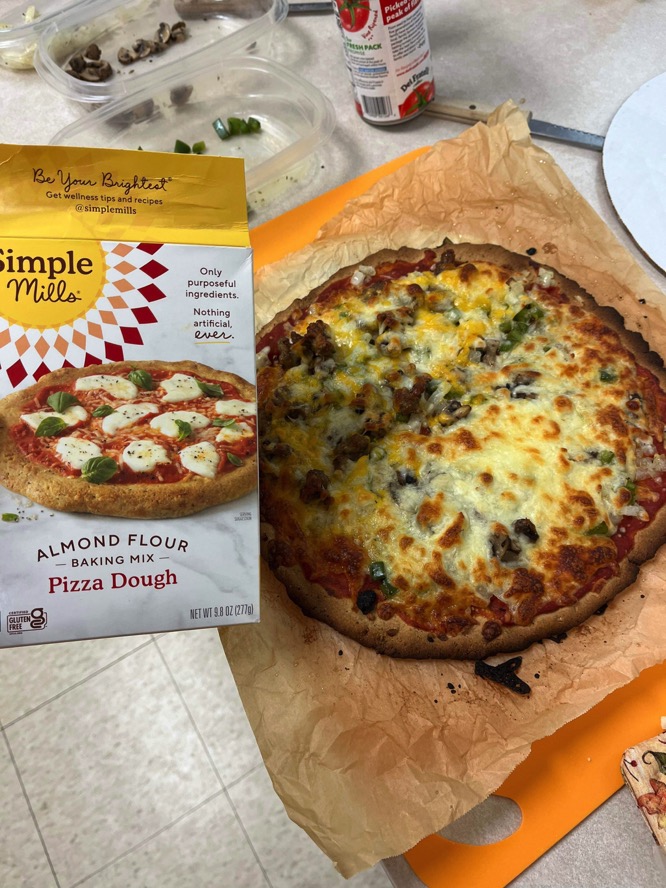
BFree Pita Bread Pizza Pockets (GFCO Certified) - Make and Bake
Back in the day, I’d make “Lazy Pizzas” using corn tortillas and top them with my favorite sauce, seasonings, and toppings. Make up a bunch of them and toss ‘em in the toaster oven. It was easy to scarf down four or five of them.
Group member Kimberly is a huge Costco fan and purchased one too many packages of these and ask if we’d be interested in trying them. SURE! We had some with soup - they were hearty and delicious! I thought they’d make great pizza pockets…and they did!
I will no longer eat Lazy Pizzas like an animal. I have evolved. Hahahaha
It’s best to warm them up in the microwave so they’re more pliable before slicing and stuffing them.
I used the same fixings as the Simple Mills pizza.
Hint #1: The (unbaked) pita breads freeze well, if you can’t eat the entire package right away.
Hint #2: These make great Breakfast Pockets too! Stuff ‘em with scrambled eggs, ham, veggies…and brown in a pan (or oven if you wish).
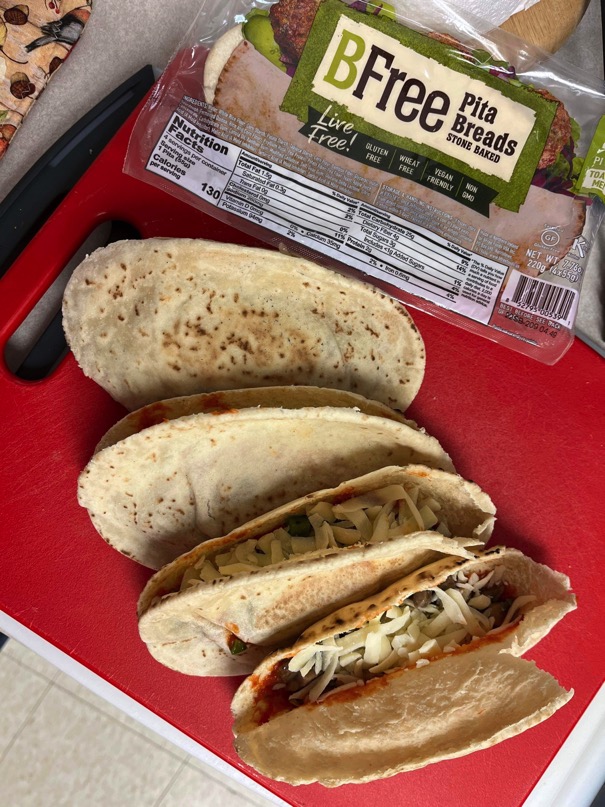
Luann & Tony’s Splendiferous Spinach with Vinaigrette Dressing - Make, Drizzle and Eat
Their green house was over flowing with this leafy goodness, so it was a “Sharin’ of the Greens”
It was nice to have a salad between trips to the pizza bar.
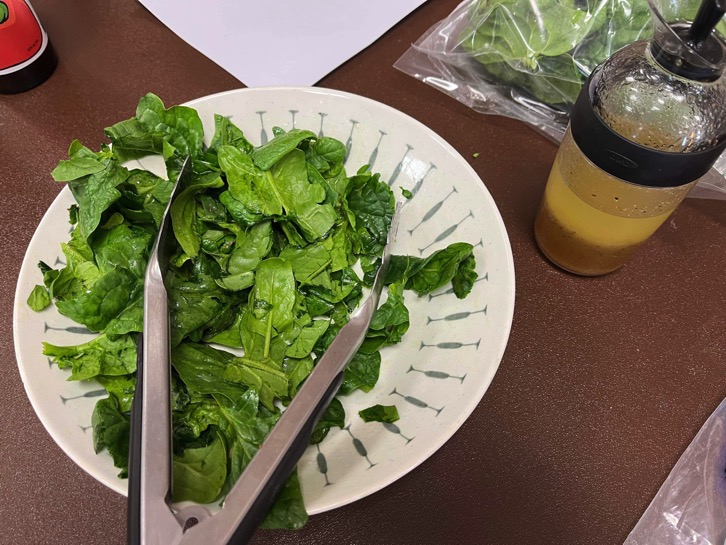
Alt Brew (GFCO Certified) and Glutenberg Beers - Crack and Sip
What’s a pizza party, without beer, right? Award winning Alt Brew is a craft nano-brewery and taproom located on Madison’s East-side. Madison (and surrounding area) is a very celiac-friendly town. Stop by their tap room for a flight and taste the goodness. It’s worth the trip!
Glutenberg, another award winning microbrewery, located in the Great White North town of Quebec. The Glutenberg IPA is a bit lighter than Alt Brew’s Hollywood Nights, Hiking Boots, and Ripped Jeans and Wolf Shirts Hazy IPA.
We also had water, and soda.
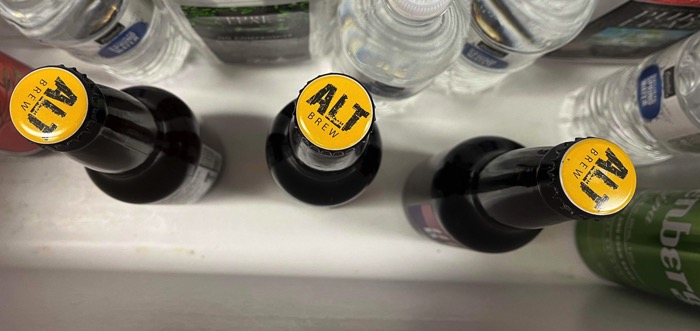
Fruit Salsa with Mission’s Baked White Corn Tortilla (GFCO Certified) and Gluten-Free Soft Tortilla Wraps (GFCO Certified) sprinkled with sugar and cinnamon - Scoop and Eat
Peggy want to recreate this dish she had at a retirement party a few weeks back - using gluten-free chips, of course. The salsa consisted of strawberries, kiwi, apples, raspberries, and a fruit preserve spread for the “sauce”. The white corn tortillas thicker and crunchier than the thinner, crisp tortilla wraps. The best option for this dish are the tortilla wraps.
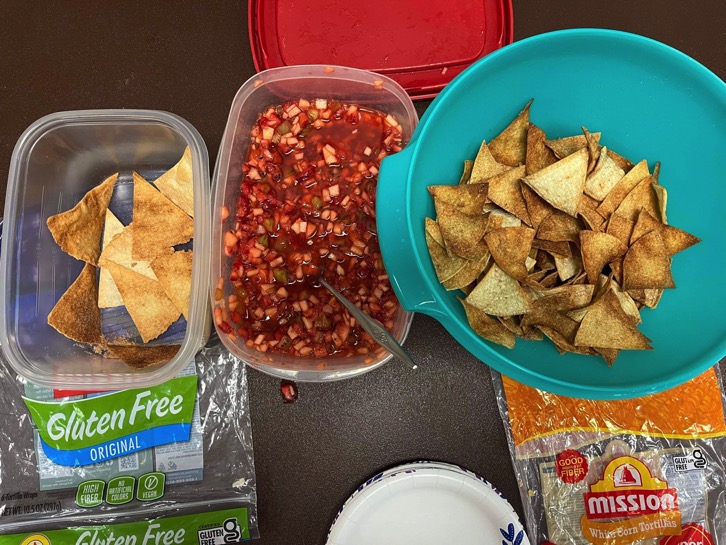
“Quality Control”

Happy Bellies’ Sugar Cookies (Dedicated GF Bakery) and Pillsbury Gluten-Free Chocolate Fudge Premium Brownies (GFCO Certified) - Take and Eat & Bake and Eat
Goodies from Happy Bellies are always welcomed. Sheri made sure we had a well-rounded pizza party with these sweet treats to finish off the meal!
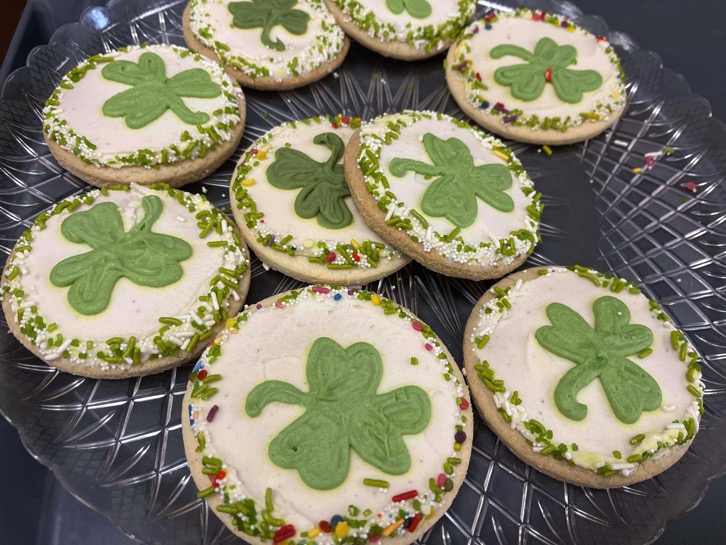
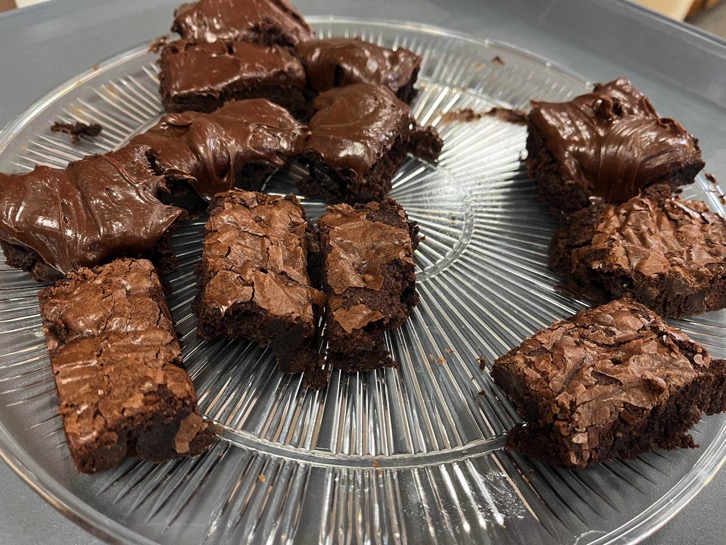
Paul and Jeff navigating their way through the 15 foot all-you-can-eat pizza buffet.
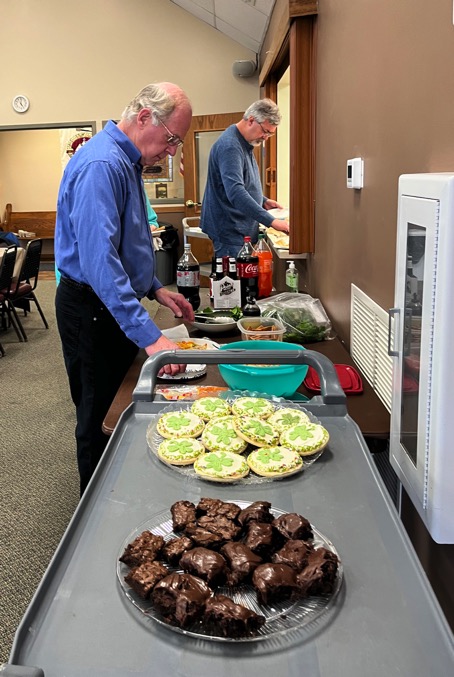
I didn’t expect to have much of an audience while making the Simple Mills pizza, but, as they say in the movies “Build it and they will come.”
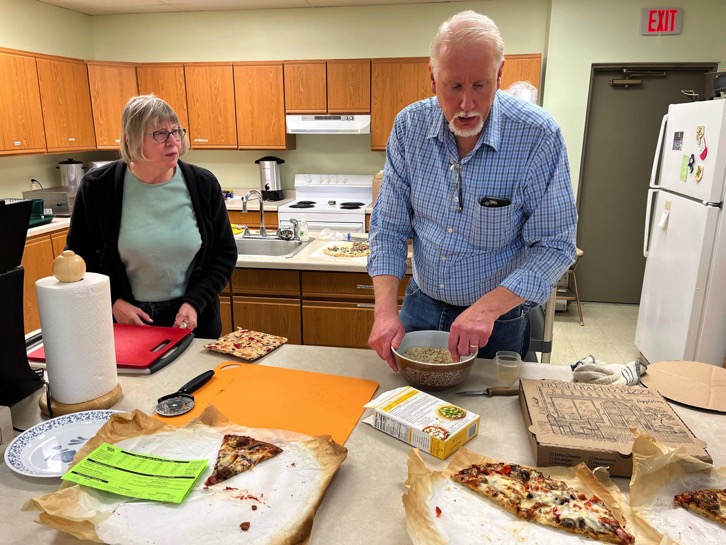
After mixing the dry and wet ingredients into formable ball, we are ready to press out the dough on parchment paper.
Tearing off a pizza-sized piece, I ball it up before flatten it out. Everyone asked, “What are you doing?”
If you watch enough cooking shows, you pickup a few tricks, like, how to stop parchment paper from rolling up. BRILLIANT!
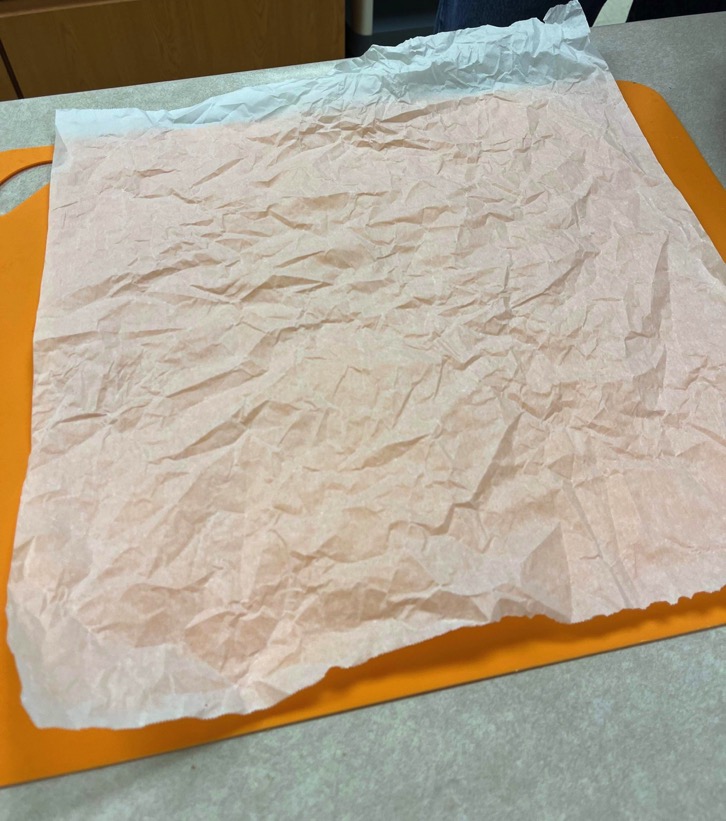
Pressing out the dough on my neatly crumpled, lightly oiled parchment paper, while Jane checks out the box.

The crust has been par-baked, it’s time to top it and pop it into the oven for the final bake.

Ready for the oven! “Is it done yet? We’re hungry!”

Shannon and Chris workin’ the pizza oven.
Jane and Jeff volunteered the services of their personal pizza oven. THANK YOU! This was a great addition.
If you’ve not had a GF pizza baked in a GF pizza oven, you’re missing out on a great pizza. Even frozen ones taste better. These ovens make such a crispy crust - something I’ve not been able to achieve in a traditional oven (without burning it and setting off the smoke alarm…).
Really need to find a place to store one of these bad boys.
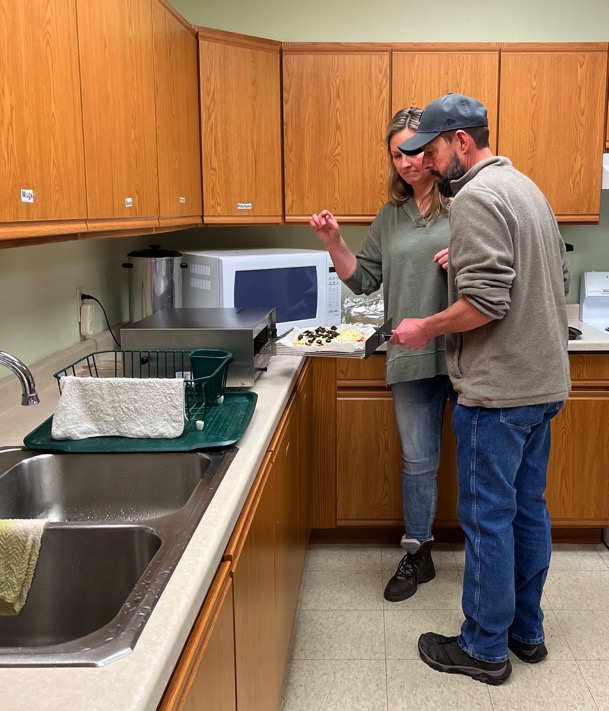
Gluten-Free Knights of the Square Table… <3



Gluten-Free Turkeys 2022
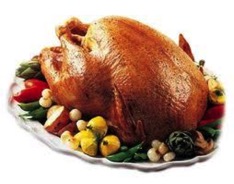
Some turkeys are not gluten-free. Always check the ingredient list! If you are unsure, call the manufacturer and ask questions.
Pay close attention to any seasoning or flavorings added to the turkey. The ingredients may be a likely source of gluten in your turkey.
Some turkeys will include a separate gravy packet - some are gluten-free, others are not. Be sure to read the ingredient list. Tossing the gravy packet is the best plan, gluten-free or not. Make it yourself; it’ll be so much better.
Be aware that the US Dept. of Agriculture (USDA) regulates labeling for meat, poultry, egg products. USDA regulations for labeling allergens [like wheat] are not the same as the FDA regulations. Companies may voluntarily comply with FDA regs, but they are not required to disclose wheat, barley, rye, oats, or any derivatives.
Starch
Food Starch
Dextrin
Call the company to verify the source as they could be derived from gluten sources.
About 80-90% of the USDA companies follow FDA allergen labeling regulations.
 “Gluten-Free Label Reading”
http://bit.ly/GIGECW-GF-Label-Reading
“Gluten-Free Label Reading”
http://bit.ly/GIGECW-GF-Label-Reading “Guide to Gluten Cross-Contact”
http://bit.ly/GIGECW-Gluten-CC
“Guide to Gluten Cross-Contact”
http://bit.ly/GIGECW-Gluten-CC

If this is your first gluten-free holiday season, you might check out our Navigating The Holidays article for some hints and tips.
"For many, the holiday season is filled with smiles, laughter and lots of merriment. However, for those with dietary restrictions, it can be the complete opposite – fear, dread and lots of worriment."

Looking for some holiday recipes?
Check out some of our favorites.
Gluten-Free Holiday Dinner Guide - complete with a few recipes!
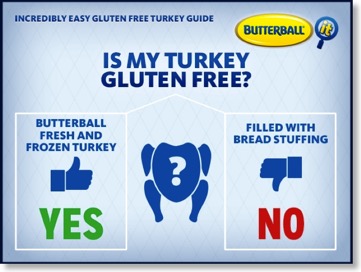
INCREDIBLY EASY GLUTEN FREE TURKEY GUIDENeed to prepare a gluten-free holiday dinner? Butterball can help! Our Butterball fresh and frozen raw unstuffed turkeys are always gluten-free, and our gravy pack included with our Butterball Whole and Boneless Breast items is also gluten-free. And for all the trimmings, check out the recipes below to find a variety of gluten-free side dishes and desserts sure to please all your holiday guests. For a detailed explanation on our gluten-free products, visit Are Butterball Turkeys Gluten Free on our Frequently Asked Questions Page.Q: ARE BUTTERBALL TURKEYS GLUTEN FREE?A: All of the Butterball products are gluten free except for Butterball Stuffed Turkey (bread stuffing) and Butterball Frozen Meatballs. For our products that are packaged with gravy packets, the gravy packets are gluten free as well. The gravy contains rice flour instead of wheat flour and the modified food starch is corn based.
Gluten-Free Butterball Turkeys:
Fresh L'il Butterball
Frozen Whole Turkey
Frozen L'il Butterball
Frozen Fully Cooked Smoked Turkey
Frozen Fully Cooked Baked Turkey
Ready to Roast Whole Turkey
Butterball Contact:
http://www.butterball.com/contact-us
Do your hams or turkey breast contain glutens?
Do your hams or products have glutens in them?All of our shipped hams, turkey breasts and whole turkeys are gluten-free! Please note: Products in our retail store are not produced in a gluten-free environment.
Honeysuckle FAQ
Do you turkeys contain gluten?Honeysuckle White® fresh and frozen whole turkeys and bone-in turkey breasts do not contain gluten. If the turkey you purchased has gravy, our gravy does not contain gluten either. Rice flour is used in the preparation of our gravy.
What does your turkey broth contain?Turkey parts and water only.
What is the “natural flavoring” listed on your turkey label?For our whole turkeys and bone-in breasts, the natural flavoring is celery & rosemary extract. For our ground turkey, it is rosemary extract.
Honeysuckle White Whole Turkeys:
Bone-in Turkey Breasts:
Honeysuckle While offers several gluten-free products, however, you have to check each product.
Jenni-O is a Hormel Company. Hormel will clearly gluten (wheat, barley/malt, rye, oats).
We understand our customers concerns when it comes to allergens and ingredients in the foods you love to eat. If you ever have any questions or comments for us, we’d really love to hear from you.Please call our Customer Service Representatives at 1-800-523-4635 or submit your question online. Although our products are labeled in compliance with government regulations, we believe he best practice is for you to read the labels on the products to determine if the food product meets your required needs. Parents and individuals with food allergies and/or food intolerances are responsible for reading the label of all products they intend to use regardless of how the product is represented on this site.
Hormel's Gluten-Free List (See Jenni-O Brand)
Jenni-O Turkeys:
Jennie-O has many items on their gluten-free list.
http://www.perdue.com/
Gluten-free products from website using their Filters. Purdue’s gluten-free offerings + No Wheat Allergen Filter
If you have questions, you can call,
Should you have further questions, please feel free to contact a consumer representative at 1-800-473-7383 Monday through Friday 9:30 AM to 6:00 PM ET, or text, chat with Perdue from their connect with us page.
http://plainvillefarms.com/faq/
Is your turkey gluten free?Yes. Turkey does not include gluten. Our turkey deli meats are gluten-free and casein-free. However, our turkey gravy and homestyle dressing contain wheat. Please read the ingredients labels and get in touch with us with any ingredient or allergy questions.
Shady Brook Farms FAQ
Do your turkeys contain gluten?Shady Brook Farms® fresh and frozen whole turkeys and bone-in turkey breasts do not contain gluten. If the turkey you purchased has gravy, our gravy does not contain gluten either. Rice flour is used in the preparation of our gravy.
What does your turkey broth contain?Turkey parts and water only.
What is the “natural flavoring” listed on your turkey label?For our whole turkeys and bone-in breasts, the natural flavoring is celery & rosemary extract. For our ground turkey, it is rosemary extract.
Whole Turkeys:
Turkey Breast:
Frozen Hotel-Style Bone-In Turkey Breast
Hotel-Style Bone-In Turkey Breast
Fresh Young Bone-In Turkey Breast
Shady Brook Farms - Contact us page.
Hams
An extensive list of companies
https://www.verywell.com/gluten-free-ham-562432
May Meeting Theme: French Toast
After a year and a half of Zoom meetings and isolation, we were craving COVID-friendly, in-person social time. On the heels of our outdoor summer picnic, we decided to take advantage of a crisp, but sunny September day to hold our first-ever pancake breakfast. The attendees deemed it a success!
As we eagerly consumed our flapjacks and bacon, we explored the idea of transitioning our meetings from Topic/Discussion/Education-centric to Social/Food-centric - much like our annual picnics. One idea generated from that meeting was French Toast. BRILLIANT! And eight months later, here we are…
~~~~
The Bread
Over the years, Peggy experimented with several different kinds of bread for French Toast. We found Schar’s Artisan Baker White Bread to be our favorite - until we tried Schar Baguettes. Artisan Baker - we thank you for your past excellent French Toast service, but your colleague will take over the #1 slot.
A few reasons why I like the baguettes; the crust, and the overall size. I like the crust-to-center ratio. The crust gives you a nice crunch to compliment the creamy custard-like texture of the center. Also, the sturdy crust allows you to easily eat the slice with your fingers. Never know when you’ll need French Toast On the Go!
Having an unsliced loaf to work with gives us the flexibility to cut the bread to a personal preferred thickness. Too thin - the bread can fall apart [as we all know, gluten-free breads don’t need help in that area]. Too thick - the bread doesn’t cook in the middle. I like the bias cut because it allows the customization of grilled surface area - and it looks cool. Want a larger sized slice? Increase angle. As you can see in the picture, I was conservative with my angle on those slices.
French Toast Experts (FTEs), suggest the bread be slightly stale (one to two days old), and sliced about three quarters of an inch. Those guidelines may need slight modifications for gluten-free bread. 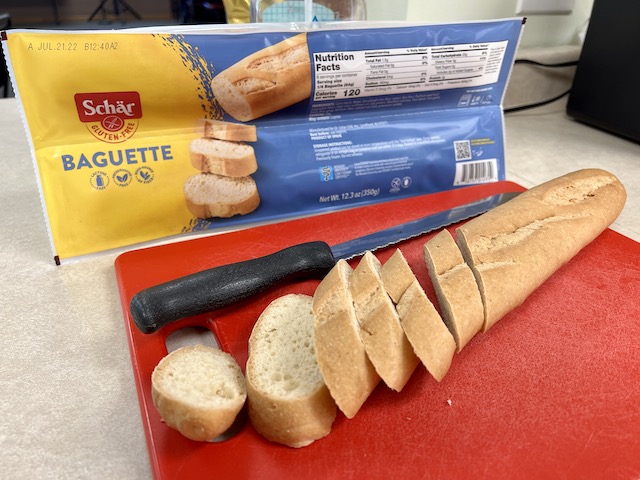
Peggy was inspired by a local restaurant’s glutenous Banana Bread French Toast. Realizing we had a couple of loaves in the freezer, she decided to try it.
Thank you Peggy & Al for sharing the banana bread!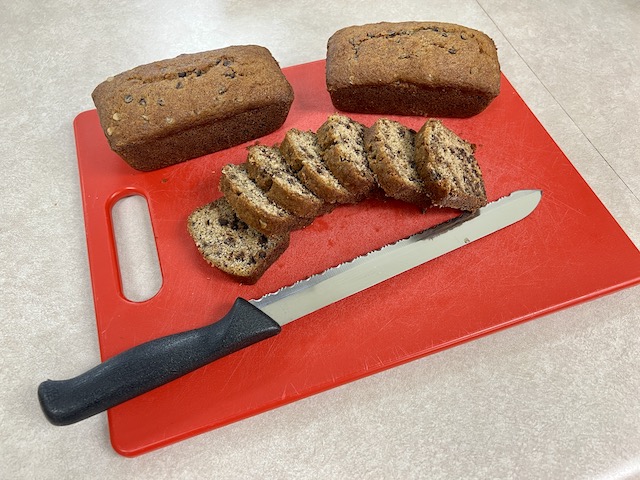
Not wanting to waste leftover bread from March’s Sandwich-a-palooza, we stashed the Canyon Bakehouse Mountain White and Schar Artisan Baker breads in the freezer to nourish us another day - French Toast Day! 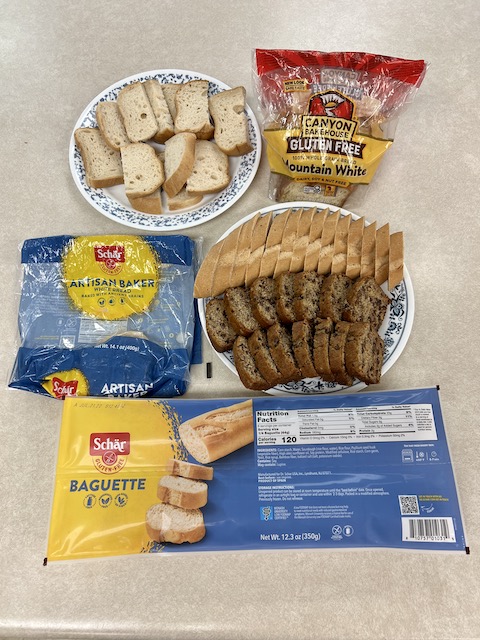
The Custard
While there are two basic ingredients - eggs & milk (or dairy-free alternative) - for optimal results, they must be in proper proportion. If there’s too much milk, the egg won’t cook resulting in wet and soggy bread. Not enough milk or too much egg, you’ll get scrambled egg toast.
FTEs suggest one egg for every one to two slices of bread, and about ¼ cup of liquid per egg. Of course the custard proportions may need some adjustment due to the size of gluten-free bread (it’s smaller), and most GF bread is dry to begin with.
FWIW - Peggy uses about two eggs per entire baguette. 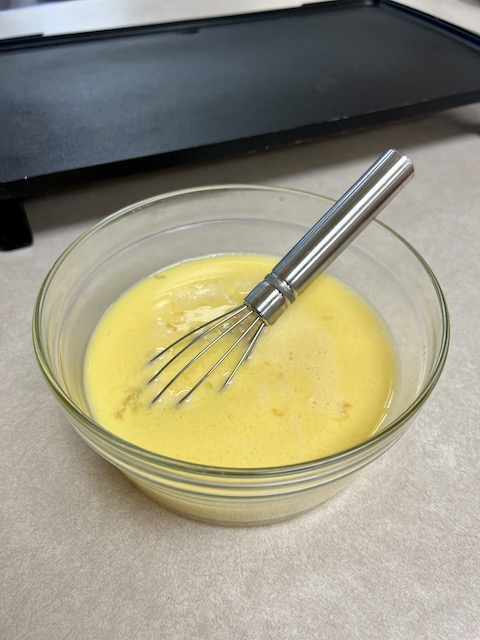
Canyon Bakehouse getting the spa treatment…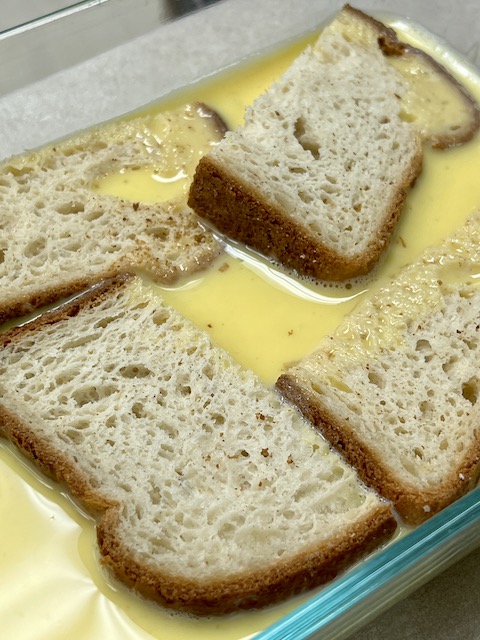
…and now a tanning session.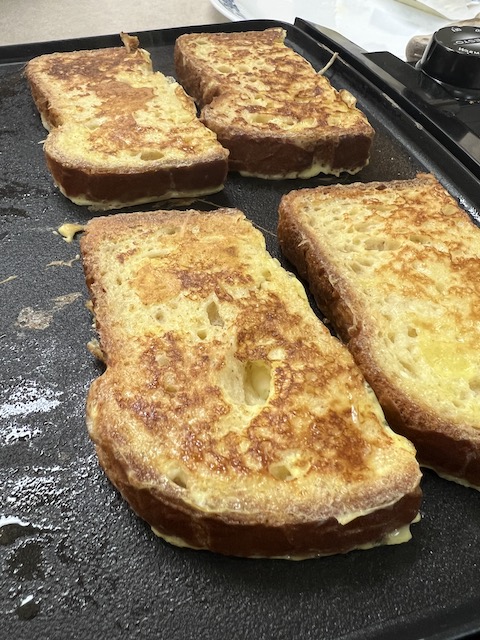
Schar baguettes taking a few laps around the pool…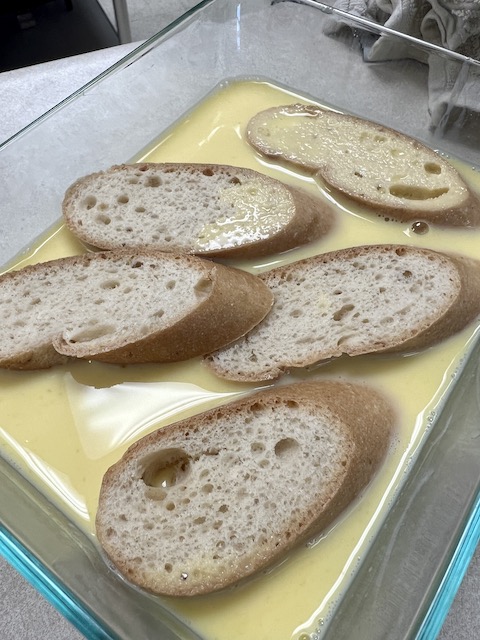
…and getting all nice and toasty after the chilly dip with their Artisan buddies in the background.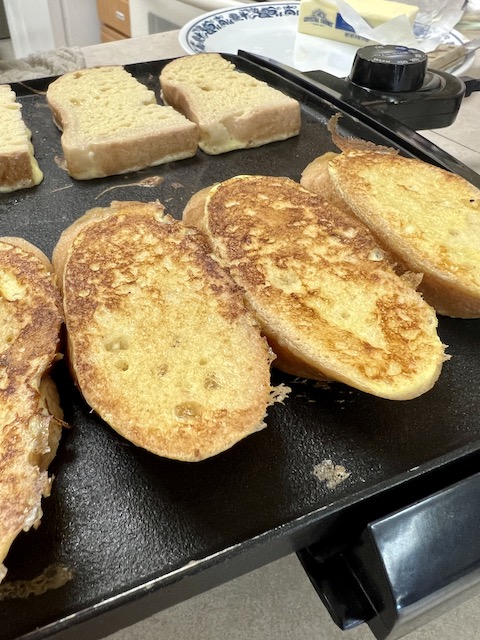
Our last contestant on “Who Wants to Get Toasted” is Peggy’s Homemade Banana Chocolate Chip bread. Saved them for last because we weren’t sure how messy the chocolate chips would get. 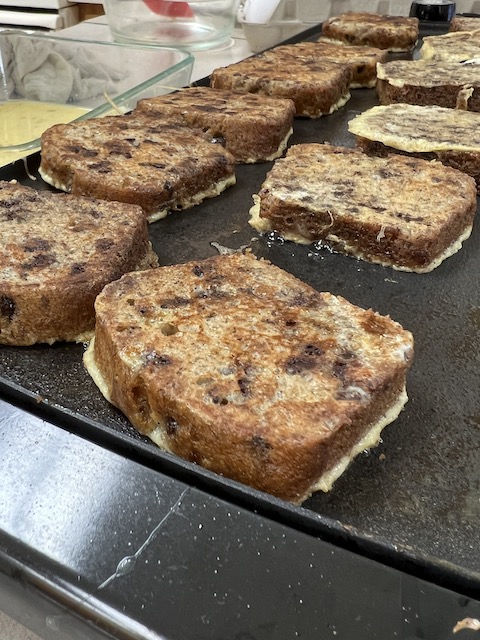
Mmmm, French Toasty goodness. 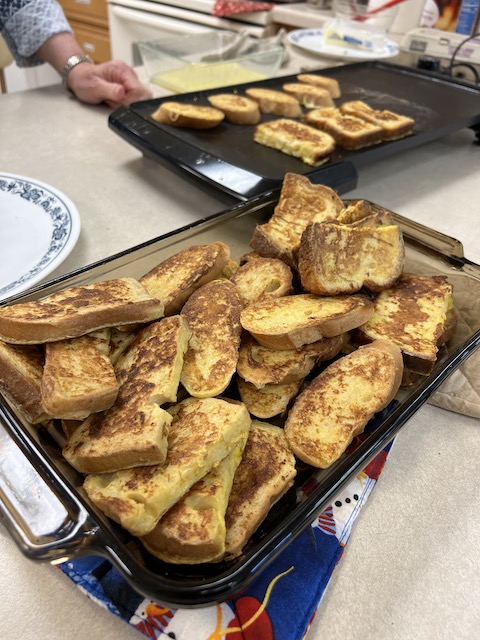
Our chief French Toast architect Peggy with trusty flipper in hand. 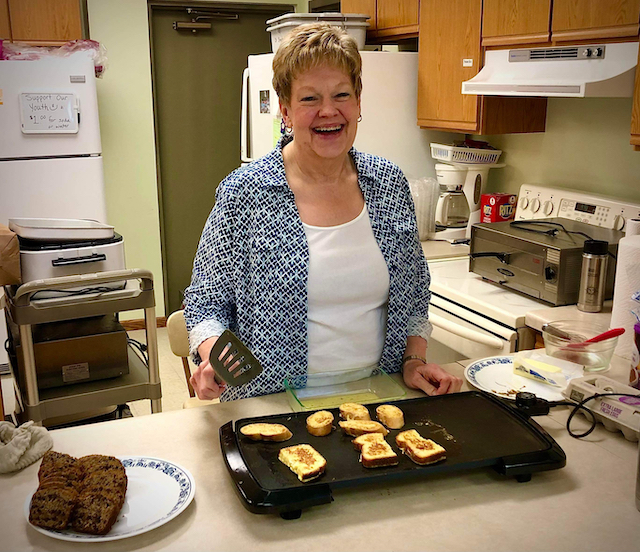
What’s French Toast without great toppings? Members brought their faves to share.
Coconut Keto Clusters and Dragon Fruit.
Never heard of either…but WOW…both were extraordinary.
Not the smartest idea, but I probably could’ve eaten this entire bag of innoFoods Coconut Keto Clusters.
Dragon fruit has been described as being mildly sweet, tasting like a blend of pear and kiwi.
Thank you Kimberly for sharing your CostCo finds!
Click the links to learn more: Pitaya Dragon Fruit, innoFoods Coconut Keto Clusters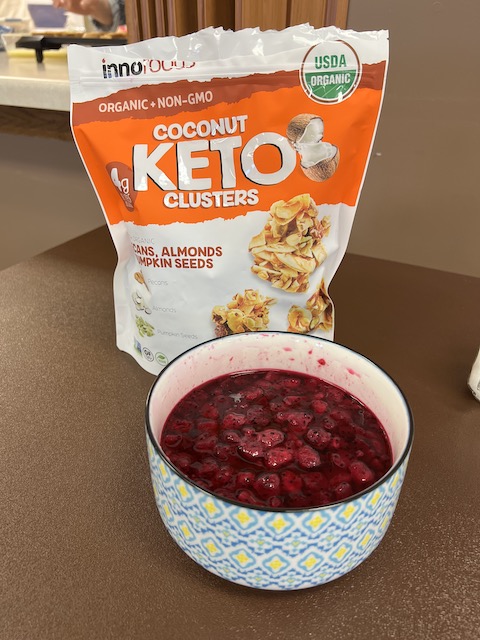
Organic Blueberries
You just can’t go wrong fresh fruit! Love blueberries!
Thank you Donna for sharing these flavorful, antioxidant packed blue orbs!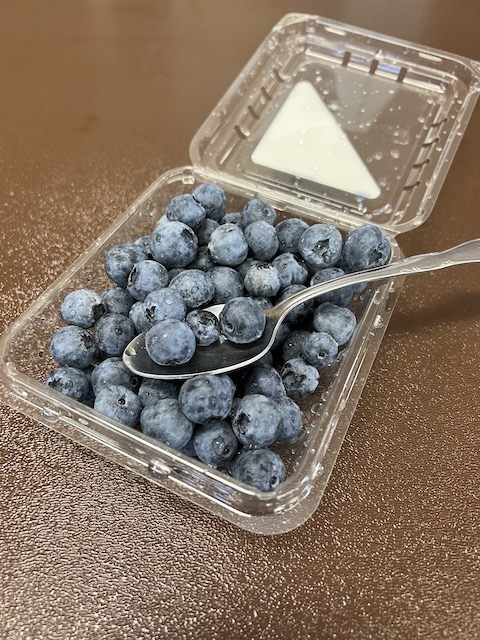
Bananas Foster Sauce and fresh bananas
While I’ve heard of this, I’m just a small town boy and never had the opportunity to try it.
OMG - we WILL make this! I think it’s safe to say, this was a hit.
Here is Luann’s recipe: Bananas Foster Sauce Recipe.
Thank you Luann and Tony for sharing this “Nectar of the Gods”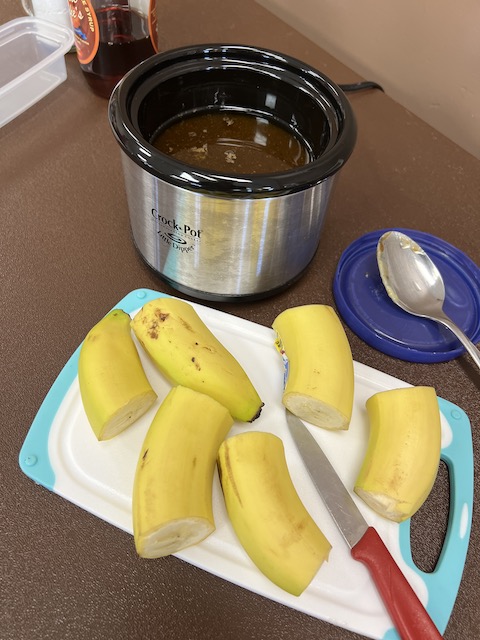
Real Maple Syrup, Butter, and Powdered Sugar
The trifecta of French Toast toppings!
Thank you Donna for sharing the butter! 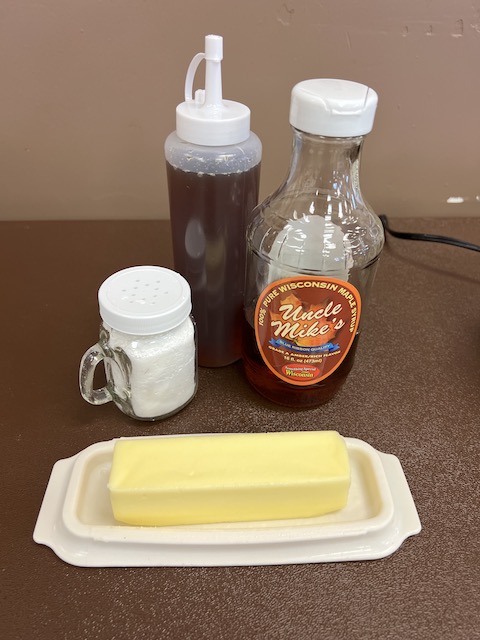
Fresh picked Daffodils
Beautiful people, beautiful food, and a beautiful table.
Thank you Don for sharing the bounty of your flower garden!
My (first) plate…
This is a collection of Canyon Bakehouse, Schar baguettes, and Schar Artisan breads topped with everything but the kitchen sink and powdered sugar. 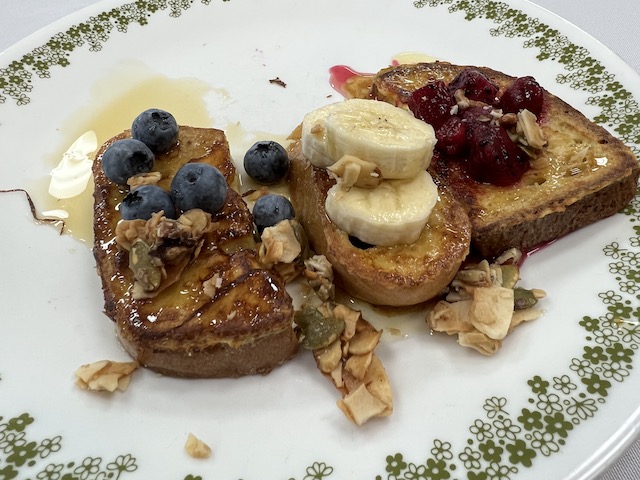
Hmmm, looks like all the plates are empty or soon to be empty.
Gotta love our small, but fun group… 
Last but not least, THANK YOU to St. Stephen’s Lutheran, ELCA (Home of the Totally Gluten-Free Communion) for opening their doors to us. <3
March Meeting Theme: Sandwich
Wow, what started out as a simple sandwich bread tasting/build your own sandwich bar evolved into an all out Sandwich-a-Palooza!
We had eight different types of bread and members brought their favorite sandwich fixin’s to share. This was the ultimate sandwich extravaganza.
The combinations were almost endless. Whodathunk? I still remember taking one bite of a sandwich made with EnerG’s Rice Loaf in 2003. The entire loaf of “styrofoam” went into the garbage. My, how things have changed!
As you all know, finding a GF doppelgänger of its evil, gluten-filled twin is extremely difficult.
Over ten thousand years ago, little did the Neolithic peoples know the good and harm that would result by shifting from hunter-gatherers to farmers. Darn you Neolithic people for getting us addicted to this desirable, but problematic substance. Hehehe.
Thankfully things have improved over the decades and we now have some really gluten-free options for bread. Are they identical to their toxic counter parts? No probably not, but they're close.
“It wasn’t just trying all those breads that was so great, it was trying them SIDE BY SIDE. That ability to compare like that was so valuable,” said Luann.

Eight feet of sandwich bread! What?!!?
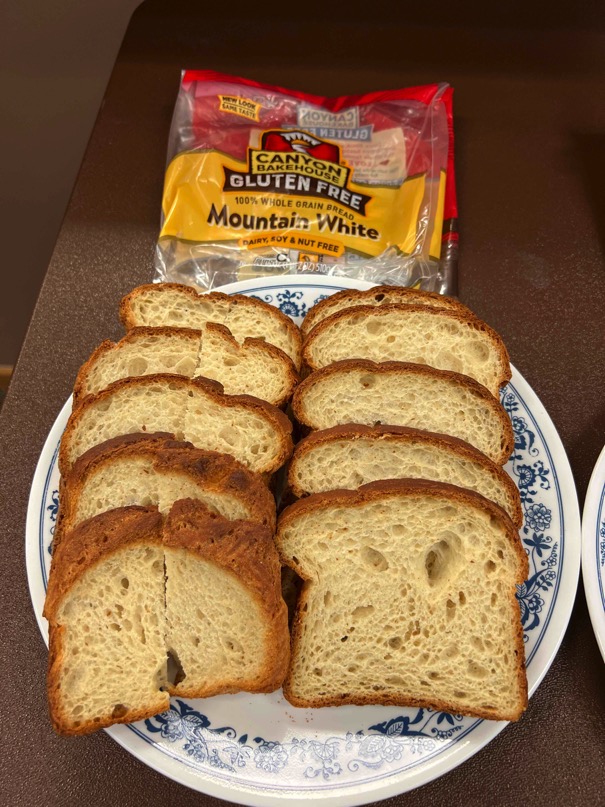
Canyon Bakehouse Moutain White (Festival Foods)
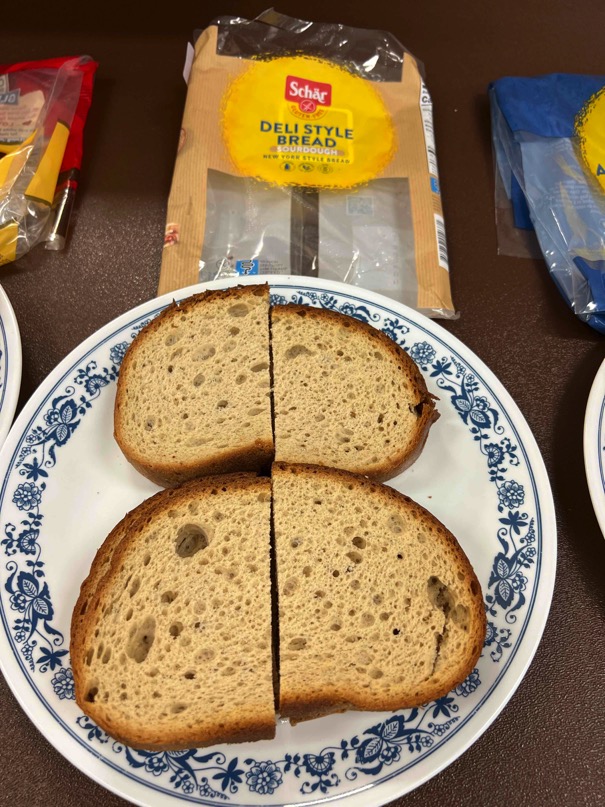
Schar Deli-style Sourdough Bread. (Festival Foods, Webster’s Market Place)
I don’t eat bread every day, but when I do, this is my favorite.
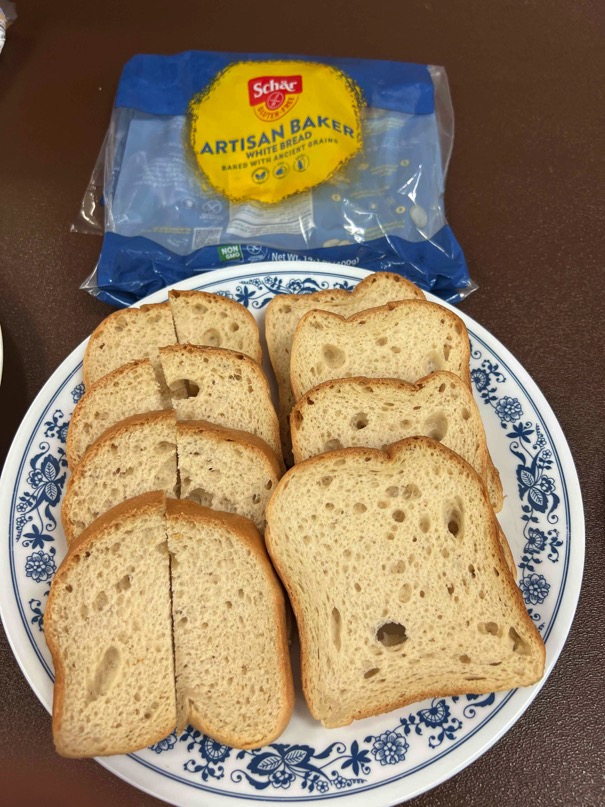
Schar Artisan Baker White Bread. (Festival Foods, Webster’s Market Place).
Not only is the good for sandwiches, we use this for making French Toast.
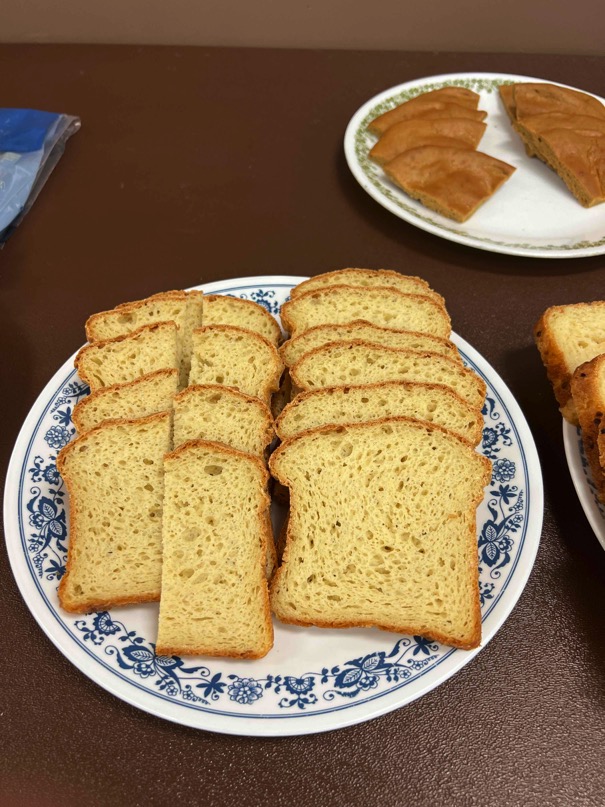
Ann’s Gluten-Free Foods White Bread. (Hippy Wayne’s The Green Tomato - Appleton).
Ann baked this fresh for us. Peggy picked it up Thursday night.
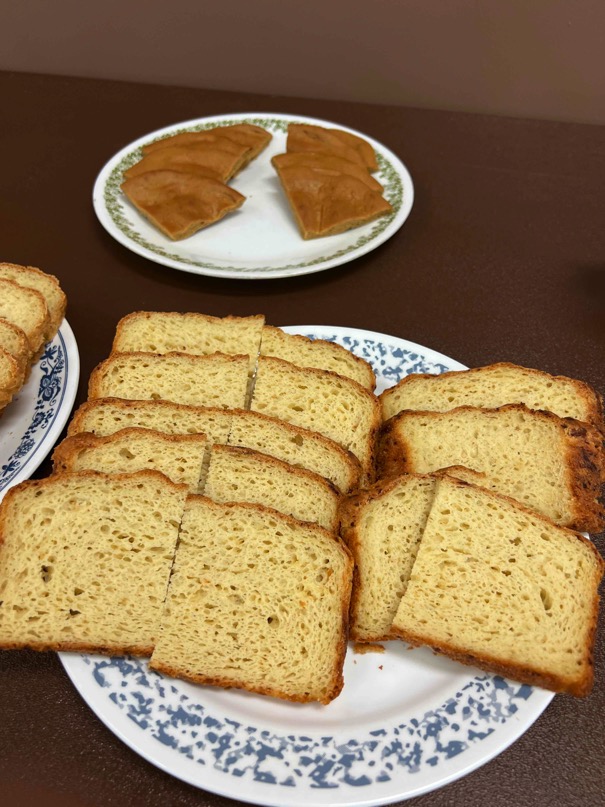
Ann’s Gluten-Free Foods Garlic Parmesan Bread. (Hippy Wayne’s The Green Tomato - Appleton).
Ann baked this fresh for us. Peggy picked it up Thursday night.
Peggy’s Dark Bread (background). Due to the molasses and honey, this bread is sweeter than most.
The magic in this bread is its ability to survive the freezing process. It remains soft and pliable.
Peggy likes it with her favorite peanut butter. I found it worked well with my egg salad.
FWIW - our church uses this bread for our gluten-free communion. You can find the recipe here,
or in our Gluten-Free Communion Guide we created to help other congregations provide gluten-free
options for their members.
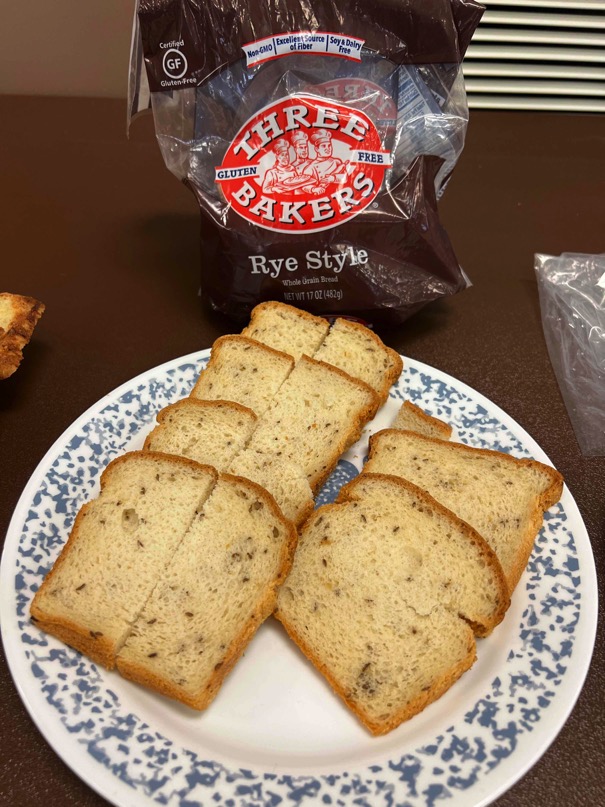
Three Bakers Rye Style Bread. Thank you, Luann and Tony sharing!
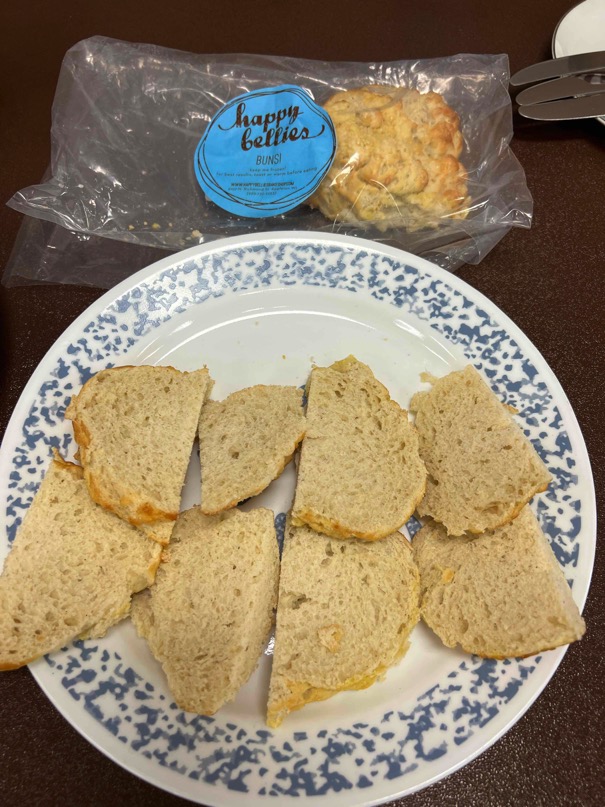
Happy Bellies Buns. (Appleton)
Thank you, Luann and Tony for sharing!
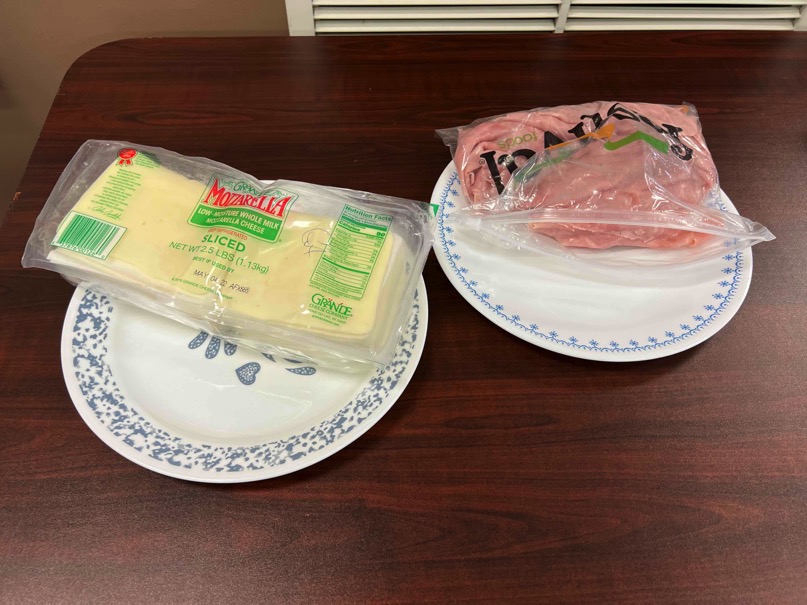
Grande Cheese Sliced Mozzerella and Festival Foods Sliced Ham.
Thank you, Donna for sharing!

Hormel Oven Roasted Turkey and Crystal Farms Baby Swiss.
Thank you, Luann and Tony for sharing!

Skippy Peanut Butter. Smuckers Natural Peanut Butter. Kirkland Basil Pesto. Miracle Whip. Cranberry Orange Honey Butter
Thank you, Peggy and Al for the peanut butter, Kimberly for the pesto, and Donna for the Miracle Whip, and Luann for the Cranberry Orange Honey Butter!

Classic Egg Salad.
Thank you, Al for sharing!

Brandon Meats Bacon.
Thank you, Peggy & Al for sharing!
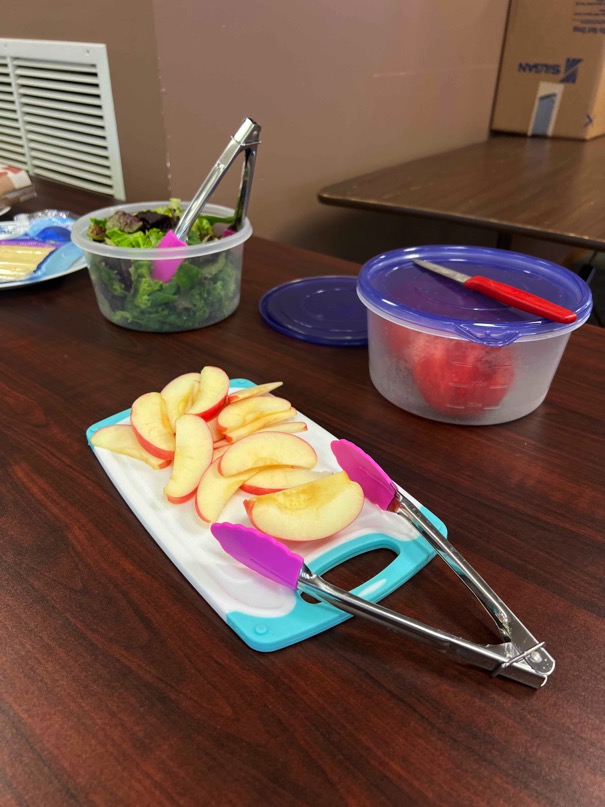
Fresh, home grown lettuce and spinach, and apples.
Thank you Luann and Tony for sharing the winter bounty of your green house!
Fun with Toaster Bags
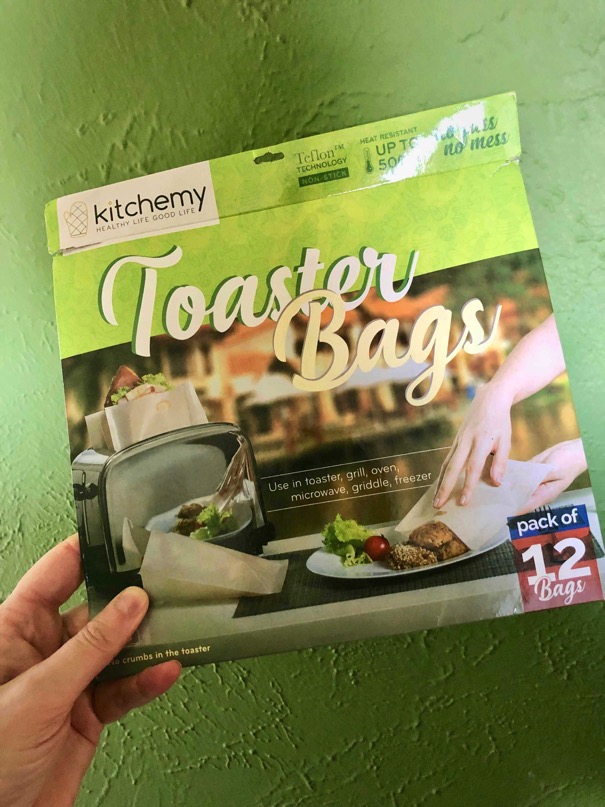
Luann brought her Kitchemy Toaster Bags for us to try! She found them at Amazon - a set of 12 bags for $12.99
Thanks, Luann!
From Amazon:
TOASTER BAGS REUSABLE (PACK OF 12): Coming in 3 different sizes, 4 Small Bags (5.9” x 6.7”) + 4 Medium Bags (6.7” x 7.5”) + 4 Large Bags (7.9” x 8.7”), we offer you the possibility to use them in all your appliances and with different sizes of mealsUNMATCHED QUALITY: Built using food friendly PTFE with Non Stick surface on both sides, our product is Easy to Clean and Heat Resistant, made to be used for 50 times in temperatures up to 500 °F without any worries;MULTIPURPOSE: Kitchemy Toast Bag will work in a toaster, oven, microwave or on a grill, allowing you to heat up or cook your favorite snack or meal, either a slice of pizza, grilled cheese sandwich, some chicken nuggets and even vegetables, at home, school or office. HEALTHY: Since we want you to live a healthier life, our gluten free Toaster Bags are the perfect choice; Reduce the risk of any allergic reaction, perfect for Celiacs; Our product is BPA free and PFOA free;
While we didn’t need to use them in our GF toaster, it was fun to try them. I’ve heard about them for years, but had not actually used them.
If you are traveling, or at a friend/relative’s house where they don’t have a GF toaster, these would allow you to safely toast your bread. As we know…most GF bread needs to be toasted
Since I didn’t take any photos of Peggy toasting her bread. I’ve recreated event at home.
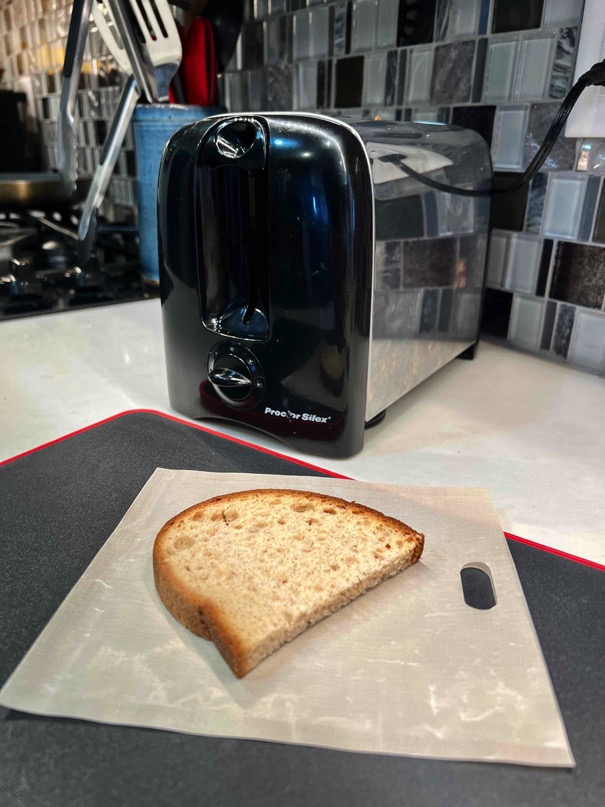
Kitchemy Toaster Bag pictured here with a 1/2 slice of Schar Deli Bread is the small.
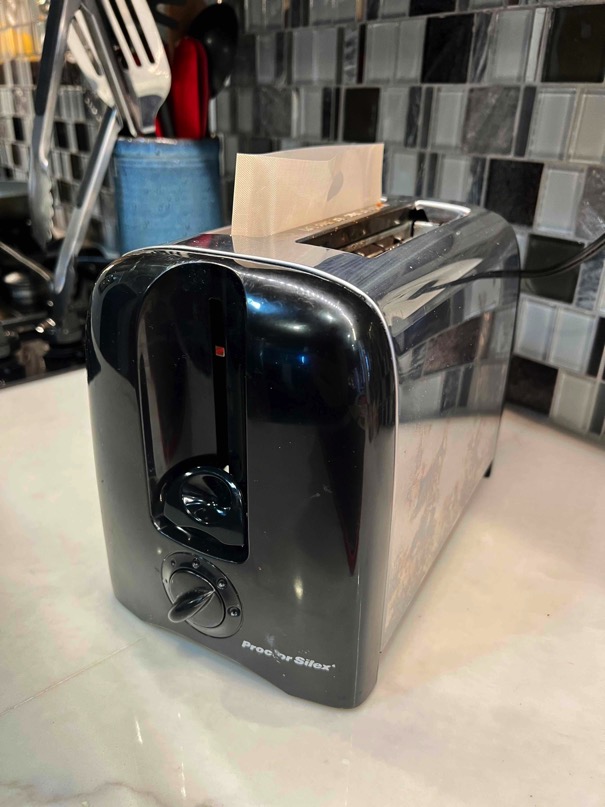
We have a cheap, no-frills Proctor-Silex toaster.
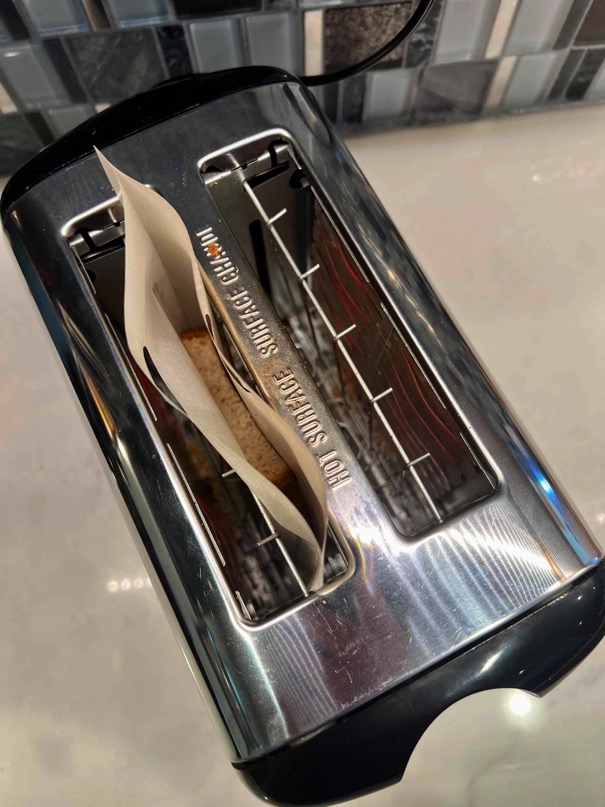
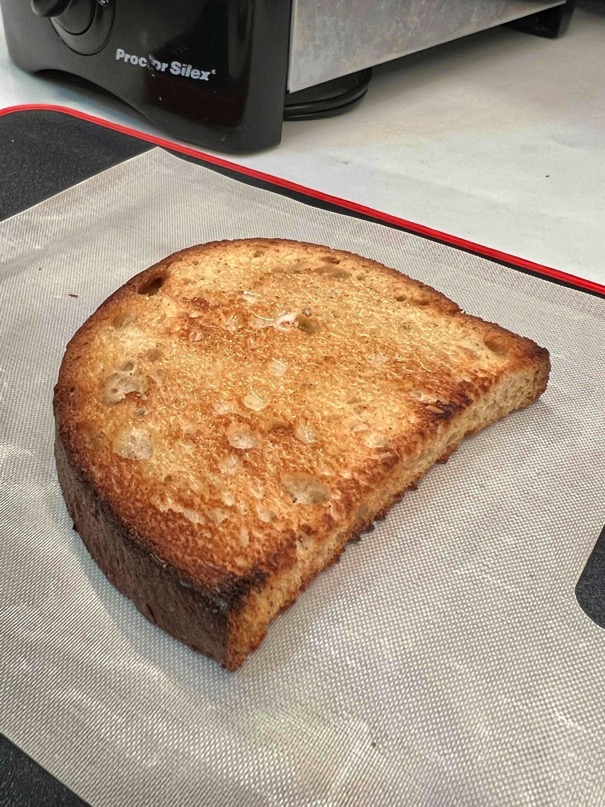
What sorcery is this??!? A nicely toasted slice of bread from a bag?!
While Peggy likes a darker toast, I prefer mine lighter (ummm, not burnt).
Gluten-Free Turkeys 2021
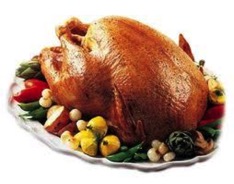
Some turkeys are not gluten-free. Always check the ingredient list! If you are unsure, call the manufacturer and ask questions.
Pay close attention to any seasoning or flavorings added to the turkey. The ingredients may be a likely source of gluten in your turkey.
Some turkeys will include a separate gravy packet - some are gluten-free, others are not. Be sure to read the ingredient list. Tossing the gravy packet is the best plan, gluten-free or not. Make it yourself; it’ll be so much better.
Be aware that the US Dept. of Agriculture (USDA) regulates labeling for meat, poultry, egg products. USDA regulations for labeling allergens [like wheat] are not the same as the FDA regulations. Companies may voluntarily comply with FDA regs, but they are not required to disclose wheat, barley, rye, oats, or any derivatives.
Starch
Food Starch
Dextrin
Call the company to verify the source as they could be derived from gluten sources.
About 80-90% of the USDA companies follow FDA allergen labeling regulations.
 “Gluten-Free Label Reading”
http://bit.ly/GIGECW-GF-Label-Reading
“Gluten-Free Label Reading”
http://bit.ly/GIGECW-GF-Label-Reading “Guide to Gluten Cross-Contact”
http://bit.ly/GIGECW-Gluten-CC
“Guide to Gluten Cross-Contact”
http://bit.ly/GIGECW-Gluten-CC

If this is your first gluten-free holiday season, you might check out our Navigating The Holidays article for some hints and tips.
"For many, the holiday season is filled with smiles, laughter and lots of merriment. However, for those with dietary restrictions, it can be the complete opposite – fear, dread and lots of worriment."

Looking for some holiday recipes?
Check out some of our favorites.
Gluten-Free Holiday Dinner Guide - complete with a few recipes!

INCREDIBLY EASY GLUTEN FREE TURKEY GUIDENeed to prepare a gluten-free holiday dinner? Butterball can help! Our Butterball fresh and frozen raw unstuffed turkeys are always gluten-free, and our gravy pack included with our Butterball Whole and Boneless Breast items is also gluten-free. And for all the trimmings, check out the recipes below to find a variety of gluten-free side dishes and desserts sure to please all your holiday guests. For a detailed explanation on our gluten-free products, visit Are Butterball Turkeys Gluten Free on our Frequently Asked Questions Page.Q: ARE BUTTERBALL TURKEYS GLUTEN FREE?A: All of the Butterball products are gluten free except for Butterball Stuffed Turkey (bread stuffing) and Butterball Frozen Meatballs. For our products that are packaged with gravy packets, the gravy packets are gluten free as well. The gravy contains rice flour instead of wheat flour and the modified food starch is corn based.
Gluten-Free Butterball Turkeys:
Fresh L'il Butterball
Frozen Whole Turkey
Frozen L'il Butterball
Frozen Fully Cooked Smoked Turkey
Frozen Fully Cooked Baked Turkey
Ready to Roast Whole Turkey
Butterball Contact:
http://www.butterball.com/contact-us
Do your hams or turkey breast contain glutens?
Do your hams or products have glutens in them?All of our shipped hams, turkey breasts and whole turkeys are gluten-free! Please note: Products in our retail store are not produced in a gluten-free environment.
Honeysuckle FAQ
Do you turkeys contain gluten?Honeysuckle White® fresh and frozen whole turkeys and bone-in turkey breasts do not contain gluten. If the turkey you purchased has gravy, our gravy does not contain gluten either. Rice flour is used in the preparation of our gravy.
Honeysuckle White Whole Turkeys:
Bone-in Turkey Breasts:
Honeysuckle While offers several gluten-free products, however, you have to check each product.
Jenni-O is a Hormel Company. Hormel will clearly gluten (wheat, barley/malt, rye, oats).
Although our products are labeled in compliance with government regulations, we believe the best practice is for you to read the labels on the products to determine if the food product meets your required needs. Parents and individuals with food allergies and/or food intolerances are responsible for reading the label of all products they intend to use regardless of how the product is represented on this site. To help those dealing with gluten sensitivity or allergies, we have a provided a list detailing the wide range of products we offer that are gluten-free.If you have any questions we would to talk to you. Please call our Customer Service Representatives at 1-800-523-4635 or submit your question online.
Hormel's Gluten-Free List (See Jenni-O Brand)
Jenni-O Turkeys:
Jennie-O has many items on their gluten-free list.
http://www.perdue.com/
Gluten-free products from website using their Filters. Purdue’s gluten-free offerings + No Wheat Allergen Filter
Gluten Free Chicken Breast Tenders (42 oz)
Individually Frozen Boneless, Skinless Chicken Breasts (3 lbs.)
Carved Chicken Breast, Grilled (9 oz.)
Carved Chicken Breast, Grilled Fajita Style (9 oz.)
Carved Chicken Breast, Grilled Italian Style (9 oz.)
Carved Chicken Breast, Grilled, (16 oz.)
Carved Chicken Breast, Honey Roasted (9 oz.)
Carved Chicken Breast, Original Roasted (26 oz.)
Carved Chicken Breast, Original Roasted (9 oz.)
Carved Chicken Breast, Rotisserie Seasoned (26 oz.)
Carved Chicken Breast, Rotisserie Seasoned (9 oz.)
Carved Chicken Breast, Southwestern Style (9 oz.)
Carved Turkey Breast, Oven Roasted (8 oz.)
SIMPLY SMART® ORGANICS Breaded Chicken Breast Nuggets, Gluten Free (22 oz.)
SIMPLY SMART® ORGANICS Breaded Chicken Breast Tenders, Gluten Free (22 oz.)
SIMPLY SMART® ORGANICS Gluten Free Breaded Chicken Breast Tenders (11.2 oz.)
SIMPLY SMART® ORGANICS Gluten Free Breaded Chicken Breast Tenders (42 oz.)
SIMPLY SMART® ORGANICS Gluten Free Grilled Chicken Breast Strips (6 oz.)
SIMPLY SMART® ORGANICS Gluten Free Grilled Chicken Breast Strips (15 oz.)
SIMPLY SMART® ORGANICS Gluten Free Grilled Chicken Breast Strips Club Pack
Should you have further questions, please feel free to contact a consumer representative at 1-800-473-7383 Monday through Friday 9:30 AM to 6:00 PM ET, or email us at www.Perdue.com.
http://plainvillefarms.com/faq/
Is your turkey gluten free?Yes. Turkey does not include gluten. Our turkey deli meats are gluten-free and casein-free. However, our turkey gravy and homestyle dressing contain wheat. Please read the ingredients labels and get in touch with us with any ingredient or allergy questions.
Shady Brook Farms FAQ
Do your turkeys contain gluten?Shady Brook Farms® fresh and frozen whole turkeys and bone-in turkey breasts do not contain gluten. If the turkey you purchased has gravy, our gravy does not contain gluten either. Rice flour is used in the preparation of our gravy.
Whole Turkeys:
Turkey Breast:
Frozen Hotel-Style Bone-In Turkey Breast
Hotel-Style Bone-In Turkey Breast
Fresh Young Bone-In Turkey Breast
Shady Brook Farms - Contact us page.
Hams
An extensive list of companies
https://www.verywell.com/gluten-free-ham-562432
Wheat Starch Info Round Up
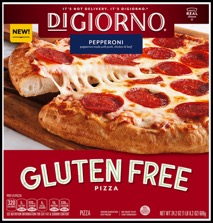
You’ll need a variety of facts to make an informed decision to determine if wheat starch is right for you. I’ve gathered up some information from trusted resources to help you understand.
Wheat starch has been used in gluten-free products for decades - in some parts of the world - but not here in the USA.
Elaine Hartsook, dietitian and original founder of the Gluten Intolerance Group, approached Ener-G Foods about their Low Protein bread. According “Our Story” on Ener-G’s website, “Elaine Hartsook, R.D., whom I hadn’t previously met, came into the office and complained that we were “killing” her patients with our wheat starch bread.” Elaine discovered that celiac patients were purchasing and consuming this Low Protein bread developed for dialysis patients. Ener-G reports this bread probably contained less than 20 parts per million of gluten. Dr. Cyrus Rubin, inventor of the Rubin Biopsy Tube and professor of Gastroenterology at the University of Washington and his dietitian - yep - Elaine Hartsook met with Ener-G and asked them to develop a gluten-free bread without using wheat starch. By 1978, Ener-G created probably one of the first (only?), commercially available gluten-free breads.
Things to know about wheat starch:
- Wheat starch IS allowed to be included in foods labeled gluten-free as long as the final product contains less than 20 parts per million.
- The FDA considers it an ingredient processed to remove gluten.
- The FDA states: “Wheat starch, when properly manufactured, does not involve hydrolysis of the gluten and can be protein-free.
- A 2014 study out of Germany - Wheat starch has been shown to contain a wide range of gluten: from less than 5 parts per million to over 10,000 parts per million - depending on the processing.
Information about Wheat Starch
Excerpts from “3 Tips for Gluten-Free Label Reading”A product that is labeled gluten-free may include the term “wheat” in the ingredient list (such as “wheat starch”) or in a separate “Contains wheat” statement, but the label must also include the following statement: “The wheat has been processed to allow this food to meet the Food and Drug Administration (FDA) requirements for gluten-free foods
If “wheat starch” is an ingredient in a GFCO–certified product, the wheat has been processed to such an extent that the food meets the GFCO standard of 10 ppm or less gluten.
About Wheat Starch
Someone allergic to wheat should avoid wheat starch. For someone avoiding gluten, wheat starch could contain gluten unless it is in a product that is certified or labeled gluten-free. In that case, the gluten in wheat starch has been processed out. As long as the product is certified or labeled gluten-free, it is safe for someone avoiding gluten.
Anytime information is needed, you folks know that I’m going to include Tricia Thompson, MS, RD. Without further ado…
Tricia Thompson, MS, RD of Gluten-Free Watchdog
Excerpts from “Does Wheat Starch Belong in a Gluten-Free Diet?”
May 2017Wheat starch is not wheat grain and it is not wheat protein. It is not intended to contain any gluten. BUT it is very difficult to completely separate the starch and protein components of wheat so small amounts of gluten remain in the wheat starch. Not all wheat starch is created equal. Depending on the extent of processing wheat starch will contain varying amounts of residual gluten.
In 2008 I wrote the following on wheat starch (from the Gluten Free Nutrition Guide, McGraw Hill):
“… If a manufacturer of wheat starch or products containing wheat starch demonstrates through testing that its products contain less than 20 parts per million of gluten, then in theory I support their consumption by people with celiac disease.”BUT more is known today about testing wheat starch for gluten than was known 10 years ago
Updated opinion on wheat starch…
Because of the current limitations associated with testing wheat starch for gluten, it is the opinion of Gluten Free Watchdog that products containing wheat starch are best avoided by individuals with celiac disease.
That said, if you have celiac disease or another gluten-related disorder and you would like to eat wheat-starch based foods, it is the recommendation of Gluten Free Watchdog that you do the following:
Eat foods containing wheat starch only if the product is labeled gluten-free.
Establish with the manufacturer that the final product is tested using both a sandwich and competitive ELISA.
An interesting article was published by Van Waffle on GlutenFreeLiving.com in February 2015. Van’s article offers a good bit of history and background information on wheat starch. Included in the article are the thoughts and advice of a number of trusted experts in the gluten-free community. You’ll notice different perspectives on this ingredient.
GlutenFreeLiving.com • Van WaffleExcerpts from “The New Word on Wheat Starch”February 2015Products made with gluten-free wheat starch are absolutely safe, says Cureton, even for people with particularly high sensitivity to gluten. Wheat starch contains such a tiny amount of gluten that it doesn’t significantly add to the gluten level in the final product. But consumers have to continue to read labels, understand what they mean, and make sure anything containing wheat starch also identifies itself as gluten-free and says that the ingredient has been processed to remove gluten.
Wheat starch in a gluten-free food may come as a surprise to U.S. consumers, but it has an established record in Europe where Dr. Schär has used it for at least 20 years, according to Anne Lee, R.D., director of nutritional services for the company’s U.S. operations in Lyndhurst, New Jersey.
Research has found no evidence that foods containing gluten-removed wheat starch harm people with celiac disease. A 2003 study at Tampere University Hospital in Finland tracked newly diagnosed patients after they adopted a gluten-free diet.
In recommending wheat starch, the authors of this study argued that minute contamination of less than 20 ppm of gluten is virtually impossible to avoid in any diet. International standards have accepted this level because it’s considered safe for the vast majority of people with celiac disease.
But some experts express skepticism. “I would not expect to see gluten-free wheat starch approved in Canada in the near future, but if the experience is a positive one in the United States, there may be a review of the situation in the mid to long term,” says Sue Newell, operations manager for the Canadian Celiac Association.
While wheat glucose syrup, wheat-based caramel and wheat maltodextrin—gluten-free derivatives allowed by Canadian labeling law—occur in food only in small fractions, wheat starch could contribute a higher proportion to the final food product, Newell notes. And she worries about the cumulative effect from traces of gluten in wheat starch when added to unavoidable gluten from cross-contamination.
The Celiac Disease Foundation supports the legislation allowing wheat starch, however. “The FDA went through a vigorous consulting process with the national groups in celiac disease, both medical and scientific, and this was the consensus: that wheat starch that has been processed to remove gluten to the FDA standard is safe for the celiac disease population,” says Marilyn Geller, chief executive officer of the foundation.
Authors of the Tampere University Hospital study point out wheat starch’s benefits. Compliance with a gluten-free diet is more important to recovery than avoiding trace amounts of gluten, they say. Because wheat starch improves the flavor and texture of certain foods, it can mean the difference in some people’s ability to accept such a difficult diet.
Schar has been a trusted and respected name in gluten-free community for decades. Currently, in the U.S. their Gluten-Free Croissants are made with wheat starch.
Schar.comExcerpts from “What You Should Know About Gluten Free Wheat Starch”Wheat Free vs. Gluten Free
One thing to keep in mind when talking about wheat starch versus wheat flour is that gluten free does not necessarily mean wheat free, and vice versa. Remember, wheat starch is made from the same grain as wheat flour, it just goes through extra processing. This means that people who are intolerant or allergic to wheat – even if they are not sensitive to gluten – could have a negative reaction.
What Gluten Free Products Use Wheat Starch?
Although gluten free wheat starch has been approved by the FDA, there is still a great deal of skepticism about it. It may comfort you to know, however, that the use of wheat starch in gluten free foods has been rigorously tested. In fact, Schär has been using it for over 20 years. When gluten free wheat starch enters the Schär facility, it goes through additional testing using the ELISA method to ensure it meets standards. In fact, more than 90% of the wheat starch Schär uses tests below 5ppm..”
Research has shown no evidence that foods made with gluten-removed wheat starch are harmful to people with celiac disease.
The Bottom Line
The truth of the matter is that it is entirely your choice which food products you do and do not eat.
For the most part, wheat starch can be considered a safe ingredient as long as it is labeled gluten free. You still need to do your due diligence in reading food labels, but as long as a product is certified gluten free it is safe to eat.
I’ve thrown a lot of information at you. Hopefully, there is enough here for you to make an educated choice.
Alan Klapperich - Branch Manager
Gluten-Free Turkeys 2020
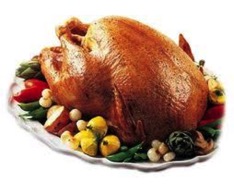
Some turkeys are not gluten-free. Always check the ingredient list! If you are unsure, call the manufacturer and ask questions.
Pay close attention to any seasoning or flavorings added to the turkey. The ingredients may be a likely source of gluten in your turkey.
Some turkeys will include a separate gravy packet - some are gluten-free, others are not. Be sure to read the ingredient list. Tossing the gravy packet is the best plan, gluten-free or not. Make it yourself; it’ll be so much better.
Be aware that the US Dept. of Agriculture (USDA) regulates labeling for meat, poultry, egg products. USDA regulations for labeling allergens [like wheat] are not the same as the FDA regulations. Companies may voluntarily comply with FDA regs, but they are not required to disclose wheat, barley, rye, oats, or any derivatives.
Starch
Food Starch
Dextrin
Call the company to verify the source as they could be derived from gluten sources.
About 80-90% of the USDA companies follow FDA allergen labeling regulations.
 “Gluten-Free Label Reading”
http://bit.ly/GIGECW-GF-Label-Reading
“Gluten-Free Label Reading”
http://bit.ly/GIGECW-GF-Label-Reading “Guide to Gluten Cross-Contact”
http://bit.ly/GIGECW-Gluten-CC
“Guide to Gluten Cross-Contact”
http://bit.ly/GIGECW-Gluten-CC

If this is your first gluten-free holiday season, you might check out our Navigating The Holidays article for some hints and tips.
"For many, the holiday season is filled with smiles, laughter and lots of merriment. However, for those with dietary restrictions, it can be the complete opposite – fear, dread and lots of worriment."

Looking for some holiday recipes?
Check out some of our favorites.
Gluten-Free Holiday Dinner Guide - complete with a few recipes!

INCREDIBLY EASY GLUTEN FREE TURKEY GUIDENeed to prepare a gluten-free holiday dinner? Butterball can help! Our Butterball fresh and frozen raw unstuffed turkeys are always gluten-free, and our gravy pack included with our Butterball Whole and Boneless Breast items is also gluten-free. And for all the trimmings, check out the recipes below to find a variety of gluten-free side dishes and desserts sure to please all your holiday guests. For a detailed explanation on our gluten-free products, visit Are Butterball Turkeys Gluten Free on our Frequently Asked Questions Page.Q: ARE BUTTERBALL TURKEYS GLUTEN FREE?A: All of the Butterball products are gluten free except for Butterball Stuffed Turkey (bread stuffing) and Butterball Frozen Meatballs. For our products that are packaged with gravy packets, the gravy packets are gluten free as well. The gravy contains rice flour instead of wheat flour and the modified food starch is corn based.
Gluten-Free Butterball Turkeys:
Fresh L'il Butterball
Frozen Whole Turkey
Frozen L'il Butterball
Frozen Fully Cooked Smoked Turkey
Frozen Fully Cooked Baked Turkey
Ready to Roast Whole Turkey
Butterball Contact:
http://www.butterball.com/contact-us
Do your hams or turkey breast contain glutens?
Do your hams or products have glutens in them?All of our shipped hams, turkey breasts and whole turkeys are gluten-free! Please note: Products in our retail store are not produced in a gluten-free environment.
Honeysuckle FAQ
Do you turkeys contain gluten?Honeysuckle White® fresh and frozen whole turkeys and bone-in turkey breasts do not contain gluten. If the turkey you purchased has gravy, our gravy does not contain gluten either. Rice flour is used in the preparation of our gravy.
Honeysuckle White Whole Turkeys:
Fully Cooked Oven Roasted Whole Turkey
Fresh Whole Turkey
Frozen Whole Turkey
Bone-in Turkey Breasts:
Frozen Bone-In Turkey Breast
Fully Cooked Hickory Smoked Bone-In Turkey Breast
Fresh Bone-In Turkey Breast
Honeysuckle While offers several gluten-free products, however, you have to check each product.
Jenni-O is a Hormel Company. Hormel will clearly gluten (wheat, barley/malt, rye, oats).
Although our products are labeled in compliance with government regulations, we believe the best practice is for you to read the labels on the products to determine if the food product meets your required needs. Parents and individuals with food allergies and/or food intolerances are responsible for reading the label of all products they intend to use regardless of how the product is represented on this site. To help those dealing with gluten sensitivity or allergies, we have a provided a list detailing the wide range of products we offer that are gluten-free.If you have any questions we would to talk to you. Please call our Customer Service Representatives at 1-800-523-4635 or submit your question online.
Hormel's Gluten-Free List (See Jenni-O Brand)
Jenni-O Turkeys:
Jennie-O has many items on their gluten-free list.
http://www.perdue.com/
Gluten-free products from website using their Filters. Purdue’s gluten-free offerings + No Wheat Allergen Filter
Gluten Free Chicken Breast Tenders (42 oz)
Gluten Free Chicken Breast Tenders (42 oz)
Individually Frozen Boneless, Skinless Chicken Breasts (3 lbs.)
Carved Chicken Breast, Grilled (9 oz.)
Carved Chicken Breast, Grilled Fajita Style (9 oz.)
Carved Chicken Breast, Grilled Fajita Style, (26 oz.)
Carved Chicken Breast, Grilled Italian Style (9 oz.)
Carved Chicken Breast, Grilled, (16 oz.)
Carved Chicken Breast, Honey Roasted (9 oz.)
Carved Chicken Breast, Original Roasted (26 oz.)
Carved Chicken Breast, Original Roasted (9 oz.)
Carved Chicken Breast, Rotisserie Seasoned (26 oz.)
Carved Chicken Breast, Rotisserie Seasoned (9 oz.)
Carved Chicken Breast, Southwestern Style (9 oz.)
Carved Turkey Breast, Oven Roasted (8 oz.)
SIMPLY SMART® ORGANICS Breaded Chicken Breast Nuggets, Gluten Free (22 oz.)
SIMPLY SMART® ORGANICS Breaded Chicken Breast Tenders, Gluten Free (22 oz.)
SIMPLY SMART® ORGANICS Gluten Free Breaded Chicken Breast Tenders (11.2 oz.)
SIMPLY SMART® ORGANICS Gluten Free Breaded Chicken Breast Tenders (42 oz.)
SIMPLY SMART® ORGANICS Gluten Free Grilled Chicken Breast Strips (6 oz.)
Should you have further questions, please feel free to contact a consumer representative at 1-800-473-7383 Monday through Friday 9:30 AM to 6:00 PM ET, or email us at www.Perdue.com.
http://plainvillefarms.com/faq/
Is your turkey gluten free?Yes. Turkey does not include gluten. Our turkey deli meats are gluten-free and casein-free. However, our turkey gravy and homestyle dressing contain wheat. Please read the ingredients labels and get in touch with us with any ingredient or allergy questions.
Shady Brook Farms FAQ
Do you turkeys contain gluten?Shady Brook Farms® fresh and frozen whole turkeys and bone-in turkey breasts do not contain gluten. If the turkey you purchased has gravy, our gravy does not contain gluten either. Rice flour is used in the preparation of our gravy.
Whole Turkeys:
Turkey Breast:
Frozen Hotel-Style Bone-In Turkey Breast
Hotel-Style Bone-In Turkey Breast
Fresh Young Bone-In Turkey Breast
Shady Brook Farms - Contact us page.
Hams
An extensive list of companies
https://www.verywell.com/gluten-free-ham-562432
Heat and the Destruction of Gluten

This question has been asked countless times over the years. Until now, we have not had any concrete answers.
All too often the gluten-free community runs into restaurants using the same deep frier for gluten items and their gluten-free items. Of course, we know this practice is not acceptable for those requiring truly gluten-free foods, but the uneducated think otherwise.
This study appearing at the International Celiac Symposium 2017 India, shows it's quite difficult to destroy gluten with temperatures used in customary cooking methods. And when it is destroyed, it's not safe to eat [not that gluten is safe to eat in its uncarbonized state...]
Rodriguez Herrera A2, Garcia Sanchez M2, Lamprea Moruno M2, Monje J3, Comino I1
1 Facultad de Farmacia, Spain, 2 IHP Group, Spain, 3 Universidad Pablo de Olavide, Spain
Background
Verify effective elimination of Gluten Immunogenic Peptides (GIP) by home cooking techniques.
Methods
Batches of samples of gluten containing flour, potatoes, and potatoes plus flour matched to controls were tested. Each batch was cooked in laboratory by use of electric stove, gas stove, oil deep fryer, induction stove and water bath and was cooked at temperature range from 91-233°C (196-452 F) for 5 up to 30 minutes. GIP content was tested by GlutenTox® Sticks (KT- 5340 Biomedal Diagnostics) based on antibody G12.
Results
On gas stove was necessary to keep 233 °C (451 °F) for 10 minutes to have absence of GIP detection. In range 190-200°C (374-392°F) incubation for 30 minutes was needed to have absence of GIP detection. Tests in temperatures below 190°C (374°F) showed presence of GIP at 10 and 20 minutes.
On induction stove temperature up to 246°C (475°F) for 6 minutes was needed to have negativity to GIP. Lower temperature ranges in spite of extended time up to 30 minutes were unable to get negative GIP. In oven processing never was got negative GIP signal, in spite of processing up to 210°C (410°F) and extended incubation time up to 45 minutes.
Samples processed on electric stove, water bath and deep frying showed presence of GIP in all ranges of time and temperature.
Conclusion
It is not realistic the elimination of gluten (GIP) at home kitchen by heat as temperatures higher that 200°C (392°F) are needed. Extended processing time is no compatible with conventional recipes. Fat processing over 200 is link with toxic metabolites generation which may be harmful. Use of oven or deep frying without proper cleaning may transfer GIP to meals when previously gluten containing meals were processed in these appliances.

On September 14th, 2020, Gluten-Free Watchdog presented their first-of-its-kind study to the Association of Official Analytical Collaboration (AOAC) International. This study measured the amounts of gluten found in gluten-free foods when cooked in fryers that previously fried gluten-containing foods.
Like the study above, Gluten-Free Watchdog shows that gluten cross contact in shared fryers is problematic for individuals with gluten-related disorders.
“Gluten-free foods cooked in shared fryers with wheat: A pilot study assessing gluten cross contact.”
Dietitians have long been discouraging consumers with celiac disease (CD) from ordering gluten-free foods cooked in shared fryers at restaurants.
This recommendation is based on presumed gluten exposure versus evidence-based research that gluten cross contact occurs. To the best of the authors’ knowledge there is no published data on gluten levels of gluten-free foods after cooking in shared fryers.
The lack of evidence of cross contact contributes to confusion among consumers, especially when gluten-free foods cooked in shared fryers (e.g., fries) are marked as gluten-free on some restaurant menus.
The purpose of the present study is to help inform consumer recommendations by assessing gluten levels of fries free of gluten-containing ingredients cooked in shared fryers with wheat.
Results
The sandwich R5 ELISA found quantifiable levels of gluten in 9 of 20 (45%) orders of fries ranging from 7 to > 84 parts per million (ppm)(above the highest standard) (Table 1).
Five orders (25%) of fries tested above 20 ppm of gluten.
Fries from 6 of the 10 (60%) restaurants were found to contain quantifiable levels of gluten in at least 1 of the 2 orders, with fries from 4 of these 6 restaurants found to contain levels above 20 ppm of gluten in at least 1 of the 2 orders.
The competitive R5 ELISA found gluten in 3 of the 20 (15%) orders of fries ranging from 14 to > 283 ppm gluten (above the highest standard).
Summary
Results of this assessment suggest that gluten cross contact may occur when gluten free foods are cooked in shared fryers with wheat. While a much larger study may be warranted, it remains prudent to advise consumers with CD to avoid foods cooked in shared fryers.
It is impossible for a consumer to know how much gluten is in fryer oil and how much gluten may end up in an order of fries. Shared holding trays, scoops, and fryer baskets also are sources of potential cross contact.
The gluten levels reported in this investigation are likely underestimates due to the limitations of the analytical methods available for gluten analysis of foods heated to high temperatures
For more information (including PowerPoint presentation, video, and white paper):
http://bit.ly/GFWD-French-Fry-Study
Updates:
9/27/20 - Added Gluten-Free Watchdog’s study.
Grain-Free for the Gluten-Free
At this stage of the game, you’ve probably heard about some type of low or no carb diet template. As the name suggests, these diets remove all grains - yes, even the gluten-free grains.

Hidden Danger of “Grain Free” Food Companies Don’t Want You to Know
by Jennifer Fugo of GlutenFreeSchool.com
Jennifer’s excellent article explores several facets - benefits and the hidden danger - of grain-free foods.
“Grain free is not (nor may ever be) a safe substitute for gluten free, nor is any sort of paleo certification labeling.“
Full Article: http://bit.ly/1mJMakK
Grain-free diets are known by several different names: Specific Carbohydrate Diet (SCD), Caveman, Ancestral, Paleolithic, Gut and Psychology Syndrome Diet (GAPS), Autoimmune Paleo Diet (AIP), Wheat Belly.
These diets tout a host of benefits that extend beyond a traditional gluten-free diet. Many members of the gluten-free community feel best when they’re grain-free as well.
By definition, grain-free should be gluten-free. “Gluten” is the generic name for the various proteins found in grains. You ditch the grains, you ditch the gluten. It’s a no-brainer! Um, not so fast Slick…
The purpose of this article is to make you aware of an important fact that is not always discussed by the proponents of grain-free diets.
Don't be lulled into a false sense of gluten-free safety by a grain-free food - even though it may be “Paleo Certified”. Sure, the food itself may be naturally gluten-free, but gluten-cross contamination could still be a threat. My concern is for those who may not know to be concerned about cross contact. The unknowing may wonder why they’re not feeling better while being grain-free due to gluten contamination.
Read more: http://bit.ly/1OQVXSN
Gluten contamination of grains, seeds, and flours in the United States: a pilot study - July 2010
Tricia Thompson, MS, RD, Ann Lee, EdD(c), RD, LD, and Thomas Grace
This study tested twenty-two single ingredient naturally gluten-free grains, seeds and flours.
“Gluten contamination of inherently gluten-free grains, seeds, and flours not labeled gluten-free is a legitimate concern.”
Almond flour, coconut flour, chick pea flour, flax seeds (whole or ground), whole nuts of all kinds, herbs, spices, and seasonings are some of the popular ingredients in many grain-free foods. Sure, those are all single ingredient foods - but if these foods are ground, processed, packaged on lines used for gluten containing foods, then the end product could have detrimental levels of gluten.
The bottom-line for those with gluten-related disorders who want to be grain-free - make sure your grain-free foods/ingredients are labeled or certified gluten-free.
Alan Klapperich
GIG of ECW Branch Manager
May Contain Statements Updated
May Contain, Manufactured in a facility, etc
Voluntary Food Allergen Advisory Statements
Updated March 30th 2018
I've added the Allergen Advisory Statements Study that was published in Sept. 2016.
Alan Klapperch
Branch Manager "Gluten-Free Label Reading"
http://bit.ly/GIGECW-GF-Label-Reading
"Gluten-Free Label Reading"
http://bit.ly/GIGECW-GF-Label-Reading
You may find a product labeled “Gluten-Free and Wheat-Free” that bears a GFCO gluten-free certification logo, but, it also has a “May contain traces of” statement that includes wheat. WHOA!
Believe it or not, this product is in compliance with current FDA Food Allergen Labeling and consumer Protection Act of 2004 (FALCPA) labeling laws. 
“Contains” statements address the top eight food allergens found in the product as ingredients. (Mandatory)
“May Contain” statements address potential, inadvertent cross contamination due to processing/packaging. (Voluntary)
Gluten-Free labeling supersedes voluntary advisory statements.
For years, the gluten-free community has been warned about using advisory statements for determining the gluten-free status. Their usefulness is diminished due to the lack of definition and regulation.
We covered this information in our March 19th 2011 newsletter and meeting, but it bears repeating. In 2010, HealthNow hosted their 2nd Annual Gluten Sensitivity & Celiac Forum. Cynthia Kupper, RD, GIG Executive Director was a featured speaker. She was asked this question during her Q&A session:
Q: The ingredient list contains no gluten, but there's a statement about “Processed in the same facility as...”or “Processed on the same equipment as...” what do you do? A: That’s a voluntary advisory statement designed for people with IgE allergies. Many companies use it as a “CYA”. No meaning for celiacs. A group of RD's determined that it would reckless of them to suggest that statement should be used to determine gluten-free status. If you have an IgE (anaphylactic reaction), you need to think about it.A "Contains..." statement is an allergen statement and required by law. "May Contain" is not an allergen statement.”
Source: 2010 HealthNow Gluten Sensitivity & Celiac Forum DVD
Check out this example of Aldi's Baker's Corner Instant Pudding. After the ingredient list, you'll see a statement that reads: "MANUFACTURED IN A FACILITY THAT USES TREE NUTS, SOY, MILK, AND WHEAT."
Update: While it may still be gluten-free, this product is no longer labeled gluten-free.
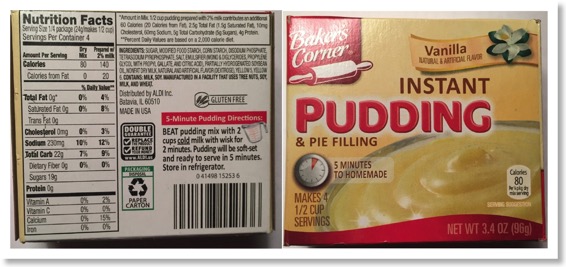
I reached out to Aldi's to ask about this product. On May 15th, 2015, the Quality Control Supervisor from Subco Foods in Sheboygan, WI (the company that does the pudding) called me. I asked about the production lines for this product - did they run any gluten products on this line?
Tamela’s answer was very thorough! The pudding lines are dedicated - only pudding is done on them - nothing else - no gluten. They test raw materials for gluten coming into the plant - they test during production and they also send samples out to a private lab for finished product testing. Between pudding flavor runs (vanilla/chocolate/etc), they follow a strict teardown and cleaning process. They are very serious about food allergens.
Also the pudding lines are isolated from their jello lines. She said they do not want dairy getting into the jello lines.
So, what do we do with products like this? Call the manufacturer to ask questions. Ask about the facilities, the production lines, and their policies and procedures for allergen handling. If they do not answer the questions to your satisfaction, find another manufacturer with a similar product that does meet your needs.
Read more:
Building upon their 2016 paper [see below], Tricia Thompson, Amy Keller, and Trisha B. Lyons published "When foods contain both a gluten-free claim and an allergen advisory statement for wheat: should consumers be concerned?" on March 26, 2018 in the European Journal of Clinical Nutrition.
This retrospective database analysis included a total of 328 gluten-free labeled products previously tested for gluten content by Gluten-Free Watchdog.
Here's what they found…
SUMMARY
On the basis of this retrospective data analysis, the use of allergen advisory statements (regardless of type) on foods labeled gluten-free was not indicative that a food was out of compliance with the gluten-free label ing rule. Due to the current lack of federal regulations for allergen advisory statements, consumers with celiac disease and other gluten-related disorders should not make gluten-free purchasing decisions based solely on the presence or absence of an allergen advisory statement for wheat.One issue that may be causing mistrust among gluten-free consumers when products contain both a gluten-free claim and a precautionary statement for wheat is the lack of required testing for foods labeled gluten-free. In the US,while foods must contain <20 p.p.m. of gluten to be labeled gluten-free, testing is not included in the FDA’s codified rule.
Increased education is needed to advise consumers that a gluten-free claim applies to gluten that may be in a product due to ingredients and cross-contact. Under the gluten-free labeling rule, a gluten-free claim on product packaging means the food must comply with all criteria of the rule,including containing <20 p.p.m. of gluten. This is true regardless of the presence or absence of an allergen advisory statement for wheat [2].
When combining the results of both studies…4/45 (9%) products that DID include an allergen advisory statement for wheat or gluten on product packaging contained quantifiable gluten.
52/384 (14%) products that did NOT include an allergen advisory statement for wheat or gluten on product packaging contained quantifiable gluten.
The FDA should strongly consider regulating allergen advisory statements, especially in light of the Food Safety Modernization Act.
– Because advisory labels are voluntary, there is no guarantee products without these warnings will not contain traces of allergens. If you are ever unsure about a packaged food, Allergic Living suggests calling the manufacturer to find out about its food allergy management practices. If company representatives can’t adequately answer your questions, avoid the food.”
Tricia Thompson, Trisha B. Lyons, and Amy Jones analyzed allergen advisory statements of 101 products previously tested for gluten content by Gluten-Free Watchdog. These products were not labeled gluten-free, however the ingredient list did not include any gluten containing ingredients (no wheat, barley, rye, malt, or brewers yeast).
On September 14th 2016, they published Allergen Advisory Statements for Wheat: NOT a Useful Predictor of Gluten Content.
Here's what they found…In this database review, precautionary labeling for wheat or gluten on products not labeled gluten-free but appearing to be free of gluten-containing ingredients was NOT a useful predictor of gluten content. In some cases, consumer reliance on precautionary statements for wheat or gluten could have resulted in choosing a product contaminated with gluten.
• 87/101 (86%) products tested for gluten did NOT include an allergen advisory statement for wheat or gluten on product packaging.
• Fourteen products (14%) tested for gluten DID include an allergen advisory statement for wheat or gluten on product packaging.
• Of the 87 products that did NOT include an advisory statement, 13 (15%) contained quantifiable gluten at or above 5 ppm including 4 products (5%) that tested at or above 20 ppm of gluten.
• Of the 14 products that DID include an advisory statement, only 1 (7%) contained quantifiable gluten at or above 5 ppm.
SUMMARY
On the basis of this analysis, the current use of allergen advisory statements for wheat or gluten are not useful predictors of whether or not a single or multi-ingredient food product contains 20 or more p.p.m. of gluten. Precautionary statements should be regulated and standardized so that they are helpful to the consumer.In terms of foods labeled gluten-free, consumers are advised to trust the label regardless of allergen advisory statements for wheat or gluten. This is due to the gluten-free labeling rule applying to both gluten in ingredients and gluten that may be found in a product due to cross contact. However, when it comes to foods not labeled gluten-free but appearing to be "gluten-free" based on ingredients, there are no established guidelines for individuals with celiac disease on whether they should avoid products with allergen advisory statements for wheat or gluten.
Increased education is also required to let consumers know that FALCPA includes ingredients only and does not include allergens that may be in a product unintentionally due to cross contact. Increased education is also needed to let consumers know that a gluten-free label applies to gluten that may be in a product due to ingredients and cross contact and that regardless of the source of gluten the product must contain less than 20 p.p.m. gluten.![]()
To learn more about this confusing matter, please watch these excellent Q&A videos from Gluten-Free Watchdog.
“‘May Contains’ on Food Labels: What You Need to Know"
By: Claire Gagné
http://bit.ly/27fg1ok
“Advisory labels or “may contains” (also called precautionary warnings) alert customers that traces of an allergenic food might unintentionally have wound up in a packaged food.
This inadvertent cross-contact can occur because of shared processing lines or baking equipment, or because workers use the same gloves while producing a number of products.
– The wording of the warning label does not give an indication as to the risk of the allergen being present.
Updates:
3/30/18 - Updated to include "When foods contain both a gluten-free claim and an allergen advisory statement for wheat…" paper
10/20/16 - Updated to include "Allergen advisory statements for wheat: do they help US consumers with celiac disease make safe food choices?"
What oats...
Alan Klapperch
Branch Manager
updated 10/25/22 - Added GFWD’s Purity Protocol link as it back online.
updated 10/14/22 - Add Gluten-Free Watchdog’s Special Statement on Purity Protocol Oats
updated 10/14/22 - Removed Gluten-Free Watchdog’s Oats link. They’ve removed the link temporarily.
updated 10/30/19 - Updated Purity Protocol Oats list from GFWD
updated 04/30/19 - Add GIG and GFWD links
updated 12/31/18 - Updated GFW’s purity protocol oats list.
updated 04/20/17 - Add Healio article "Oats appear safe for patients with celiac disease" .
updated 04/11/17 - Add GIG's Purity Protocol definition.
updated 03/02/17 - Added Trader Joes GF Rolled Oats to Purity Protocol Heros
updated 01/25/17 - Added Gluten-Free Watchdog's Updated Position Statement on Oats
updated 01/05/17 - Add more Gluten-Free Watchdog links
updated 10/28/16 - Added video and Dietitians in Gluten Intolerance Diseases (DIGID) Oats handout
updated 06/08/16 - Added Bakery on Main to Purity Protocol Rebels
updated 05/18/16 - Added GFW oat product analysis.
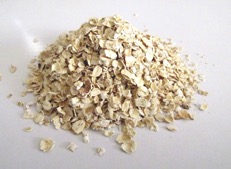
More on that later, but first a little background information on said ingredient of discussion.
Oats have been controversial for over 20 years. Are they acceptable on a GF diet or not?
Please use these excellent articles to help you and your medical professionals to make an educated decision if oats are right for you.
Oats appear safe for patients with celiac disease by Adam Leitenberger Healio.com April 20,2017
Pinto-Sánchez MI, et al. Gastroenterol. 2017;doi:10.1053/j.gastro.2017.04.009.
"These results are “reassuring, and suggest that non-contaminated oats are tolerated by the great majority of patients,” Peter H. R. Green, MD, professor of medicine at Columbia University Medical Center, and director of the Celiac Disease Center at Columbia University, and colleagues wrote. However, they noted that their “confidence is limited by the low quality and limited geographic distribution of the data.”"
To better address the controversies surrounding the safety of adding oats to a gluten-free diet, Green and colleagues reviewed studies evaluating the safety of oats as part of a gluten-free diet in patients diagnosed with celiac disease or the related skin condition dermatitis herpetiformis. They ultimately included 28 studies published up to January 2017 in their analysis, six of which were randomized controlled trials that used pure uncontaminated oats, and two of which were non-randomized controlled trials (RCTs, n = 661), while the rest were observational studies. Only RCT data were included in a meta-analysis.
One year of eating oats showed no significant effects on symptoms, histologic findings, intraepithelial lymphocyte counts, or serologic test results. These findings were comparable in both adults and children.
Further, the results of three non-RCTs suggested that dermatitis herpetiformis lesions did not worsen after consumption of oats. No studies compared regular vs. pure oats.
The investigators noted that all available RCTs were conducted in Europe, and because the purity of oats depends on the country of origin and its regulations, there is an “urgent need for studies in North America and other regions of the world where [celiac disease] is prevalent. Results from studies in Europe using locally sourced oats cannot be extrapolated to North America.”
They concluded that available data suggest celiac patients can safely consume non-contaminated oats, but more rigorous data are needed
Read more: Healio.com April 20,2017
Anthony J. DiMarino, Jr., MD
"Prolamines are the alcohol-soluble portion of the protein in wheat, rye and barley, and are antigenic in celiac patients. The prolamines in oats are not antigenic, so theoretically it’s possible that eating oats should not be harmful to celiac patients. However, some prior studies have suggested that celiac patients may experience a reaction to eating oats.
At the Jefferson Celiac Center, we believe the science behind the idea that the prolamine component of oats is safe as compared with the prolamine in wheat, rye and barley. However, we also recognize that cross-contamination of the oat supply is more likely in the U.S. than in Europe. Therefore, we advise newly diagnosed celiac patients who are still symptomatic to avoid oats. Once their anti-tissue transglutaminase or deamidated anti-gliadin antibody levels normalize, and they become asymptomatic, we advise them to cautiously introduce the purest form of oats available as there are several products that avoid cross contamination. If they become symptomatic again after consuming oats, we know that either cross-contamination has occurred, or they may be one of the perhaps 5% to 10% of patients who also may have an intolerance of oats for reasons unrelated to celiac disease."
William Rorer Professor of Medicine
Chief, Division of Gastroenterology and Hepatology
Thomas Jefferson University Hospital
verywell.com - Oats and the Gluten-Free Diet by Nancy Lapid:
http://abt.cm/1HZsDSD
verywell.com - Can People Who Can't Have Gluten Eat Oats? by Jane Anderson:
http://abt.cm/1F2Qwuk
Gluten Intolerance Group - Hot Topic Oats (Last Updated 06/06/18):
http://bit.ly/2Wic1Th
Bottom line Uncontaminated, certified gluten-free oats are considered safe for most people with celiac disease. Consult with your personal healthcare team before introducing oats into the diet. Quantity should be limited to the recommended maximum of ½ cup dry oats per day. The main issue surrounding oats for those following a gluten-free diet is cross-contamination. In light of the fact that purity protocols are not regulated, and that mechanical sorting can vary from processor to processor, only consume oats which are labeled – and preferably certified – gluten-free.
Special Statement on Purity Protocol Gluten-Free Oats from Gluten Free Watchdog - Sept 28, 2022
https://bit.ly/3gbrjbz
Also based on testing commissioned by Gluten Free Watchdog, we do not recommend the use of Trader Joe’s gluten-free rolled oats. We have been unable to confirm the source of oats used by Trader Joe’s in this product. Based on language included on product packaging as well as information available on the Trader Joe’s website (see photos), consumers have assumed that the oats in this product are purity protocol.
Gluten Free Watchdog has spoken with all known suppliers of purity protocol oats in Canada (packaging reads product of Canada). According to these suppliers, none of them provide oats to Trader Joe’s. Trader Joe’s has been unable to provide us with the source of their oats.
Gluten Free Watchdog has temporarily removed from the website the listing of purity protocol suppliers. If you are a manufacturer and you sell single ingredient purity protocol gluten-free oat products sourced directly from Avena Foods, Montana Gluten Free, or MGM Seed & Grain/Bay State Milling ONLY, please contact us info@glutenfreewatchdog.org. If you are a manufacturer who previously was included in this listing, please reach out again with updated information.
Gluten-Free Watchdog - Updated Position Statement on Oats (1/25/17):
http://bit.ly/2lcn52D
Gluten-Free Watchdog - Special Report: The Use of Oats in Gluten-Free Foods:
http://bit.ly/1qK6wwi
Gluten-Free Watchdog - Controversy continues to swirl around oats & their suitability for a gluten-free diet:
http://bit.ly/2ieJN88
Gluten-Free Watchdog - The gluten-free oats situation & why it is such a sticky wicket:
http://bit.ly/GFWD-Oats-A-Sticky-Wicket

Many in the gluten-free community would beg to differ with that recommendation because they react to gluten-free oats as well. Those in the grain-free/low-carb community offer convincing evidence that supports their lifestyle too.
Regular followup testing is also advised to make sure intestinal damage is not occurring. For those newly diagnosed, it’s suggested to restrict the use of oats for up to one year.
Also be aware that some celiacs react to the protein found in oats [known as avenin] just as they react to the proteins in wheat, barley, rye.
If you know they cause you discomfort, do not eat them.
The experts who recommend oats, all agree that only pure, uncontaminated gluten-free oats be used - no commercial oats allowed.
Why? Cross contamination with gluten [wheat, barley, rye].
A 2004 study published in The New England Journal of Medicine reveals "regular" oats should not be considered safe for those requiring a gluten-free diet. Four different lots from three different companies found gluten content ranging from less than 3 parts per million to 1807 parts per million. Gluten Contamination of Commercial Oat Products in the United States by Tricia Thompson, MS, RD
Update April 30th, 2019 - Gluten-Free Watchdog, shares more research from PepsiCo (owners of Quaker Oats brand).
Due in large part to data published in the public domain by Quaker, the celiac disease community continues to learn about the nature of gluten grain cross contact in oats, including that:https://www.somatopublications.com/oat-consumption-by-celiac-disease-patients-outcomes-range-from-harmful-to-beneficial-depending-on-the-purity-of-the-oats.pdf
Grains of wheat, barley, and rye are unevenly distributed within a given amount of oats.
Despite what may be the best efforts of suppliers, gluten-containing grains have been found in both final product purity protocol oats and final product mechanically and optically sorted oats.
See
Read More: Oats Revisited: Quaker Gluten-Free Oats - http://bit.ly/2J8ujmj
Update January 5th, 2017 - Tricia, founder of Gluten-Free Watchdog, shares another article from PepsiCo (owners of Quaker Oats brand) about testing oats. PepsiCo scientists recently published a second article in the scientific peer-reviewed literature on the difficulties associated with testing oats for gluten contamination. This article entitled “Kernel-based gluten contamination of gluten-free oatmeal complicates gluten assessment as it causes binary-like test outcomes” compliments their first article entitled, “Gluten-containing grains skew gluten assessment in oats due to sample grind non-homogeneity.”
Bottom Line. Based on the findings of the research by scientists from PepsiCo, Gluten Free Watchdog calls on ALL suppliers and manufacturers of gluten-free oats whether purity protocol or mechanically/optically sorted, and their certifying bodies to reevaluate their testing methodology and requirements for certification, respectively.
Recommendation. The situation with oats continues to evolve. As mentioned above, Gluten Free Watchdog’s position statement on oats will be updated in the near future. In the meantime, my advice is:
Choose your oat products based on your comfort level with regard to the level of information provided to you by manufacturers. You may want to consider the following:
Do they disclose their testing protocols?
Do they disclose the assay they use to test oats for gluten contamination?
If a manufacturer refuses to answer any of these questions or responds by saying the information is proprietary, the advice of Gluten Free Watchdog is to move on to another company.
Read More: http://bit.ly/2iePfrv
Quaker's first article on oat testing: http://bit.ly/2hX1JpU
Update May 18th, 2016 - Mining through five years of testing, Gluten-Free Watchdog finds oat products are at higher risk of gluten contamination compared to gluten-free labeled foods as a whole. 35 products containing oats as first or second ingredient were tested. Analysis shows:
Update October 28th, 2016 - Dietitians in Gluten Intolerance Diseases (DIGID) held a breakfast meeting at this year's Food & Nutrition Conference and Expo (FNCE). Topic: Oats.
This event was sponsored by purity protocol oats producer, GF Harvest Oats. GF Harvest Oats owner, Seaton Smith was the keynote speaker. A mechanically & optically sorted oats supplier was also asked to participate, but declined to speak. Tricia Thompson, RD, MS of Gluten-Free Watchdog volunteered to present information about sorted oats.
Tricia was kind enough for create a video to accompany the DIGID oats meeting handout. Please have the handout open while watching the video.
OK - back to the issue at hand…
Shortly after Cheerios announced their recall of 1.8 million boxes due to gluten contamination, Quaker Oats announced they will now be offering “gluten-free" oat products.
Like General Mills, Quaker Oats will not be using oats grown/harvested/transported using a purity protocol. They are using regular oats that will be "cleaned" via mechanical or optical sorting methods.
On April 7th, 2017, Gluten Intolerance Group of North America and four of the largest Purity Protocol oat producers in North America (Montana Gluten Free Processors LLC, Cream Hill Estates, Ltd., Gluten Free Harvest/Canyon Oats, Avena Foods Limited) published a consensus definition of Purity Protocol oats.
Having a standard definition allows consumers and buyers to know that oat suppliers are following industry-accepted or uniform best practices.
Protocol Requirements.
Purity Protocol oat packagers/processor/millers must ensure that their grower network is adhering to the following farm requirements (as specified in grower agreements):
- Seed Purity: All gluten-free oats must start from seed, either purchased or harvested from the previous crop, that is free from all gluten-containing grains as determined by seed counts.
- Crop Rotations: Growers shall follow a nongluten crop rotation, or a minimum three-year crop rotation between the last gluten-containing crop and the first pure oat crop, and document all previous crops grown.
- Isolation Strips: Isolation strips are required between adjacent gluten-containing crops or conventional oat crops and must be a minimum of 6 feet in width.
- Field Inspection: There must be inspections for potential sources of gluten cross-contamination during the growing season; these should be performed by third party inspectors trained specifically for gluten-free inspection.
- Traceability: The farm must identify the oats by land location, and document the harvesting equipment, cleaning equipment, transports, storage facilities, and final distribution for the grain from each location.
- Equipment Cleaning (trucks, cutters, harvesters, augurs, conveyors): Whenever possible, growers should use dedicated equipment. If not, they must use a validated cleaning process prior to handling gluten-free crops. Growers must also maintain documentation of the previous grains in the equipment.
- Harvest Samples: These must be visually inspected, preferably by a third party laboratory, for purity. Sometimes referred to as a “seed count.”
- Storage: Dedicated storage should be maintained for gluten-free oats.
- Cleaned Samples: Growers must visually inspect samples for gluten-containing grains prior to scheduling deliveries.
Conformance with the grower agreement must be documented either by the grower or through an audit by the purchaser. There must be validation that the grower agreement is in compliance with these requirements through documentation and inspection records. The documentation must be reviewed and verified. Samples must be visually inspected by the purchaser for purity prior to receipt or unloading at the purchaser’s facility.
Purity Protocol oat packagers/processor/millers must also ensure that they meet the following processing requirements:
- Dedicated gluten-free receiving systems.
- Dedicated gluten-free in-process tanks/silos/storage.
- Dedicated gluten-free grain cleaners, or appropriate procedures for cleaning grain-cleaning equipment and for the storage of portable grain cleaners.
- Dedicated gluten-free milling equipment.
- Dust control/collection procedures and schedules for changing or cleaning filters.
- Dedicated pneumatic equipment/aspirators.
- Dedicated extrusion equipment, or written procedures for cleaning or purging extrusion equipment, if applicable. Must document purge volume, and that purge material tests negative for gluten prior to beginning gluten-free processing.
- Dedicated baggers/fillers.
- Dedicated pre- and postprocess containers (such as totes).
- Dedicated rail cars, trucks, or transports, or procedures for the cleaning and inspection of rail cars, trucks, or transports used to deliver product to other facilities or customers.
- Sorting equipment may not be used for oats as a substitute for obtaining purity, but may be used as a supplement to the purity protocol to ensure purity.
- The final product must meet the 20 ppm threshold in order to be labeled gluten-free in the United States, Canada, Europe, and other countries following the Codex Alimentarius guidelines. The product must meet the regulations for gluten-free labeling in the country of sale.
- The final product must meet the 10 ppm threshold in order to be certified gluten-free by GFCO.
While the requirements of the Purity Protocol are excellent for reducing the risk of gluten contamination from wheat, rye, barley, and their hybrids and related grains, these steps do not remove the requirement that the final product be verified as containing less than 20 ppm gluten in order to be labeled gluten-free, or less than 10 ppm gluten to be certified gluten-free by GFCO.
Definition of the “Purity Protocol” for Producing Gluten-Free Oats
Read more: http://bit.ly/2oqTmpZ
Why the fuss over Purity Protocol Oats? Again, it goes back to [the lack of] cross contamination with gluten [wheat, barley, rye].
For years, the gluten-free community have been told to only use pure, certified gluten-free oats due to the gluten contamination risks. In the past, this meant acceptable oats were produced and processed according to a purity protocol similar to the one described above.
Most recently, it's been difficult to determine the pedigree of oats used in a product. Companies do not always give clear answers when asked about the oats in their products. As some of the manufacturer's statements have shown (see below), they are using a combination of purity protocol oats and "cleaned" oats, or straight "cleaned" oats.
For a more detailed look at this aspect, please read Gluten-Free Watchdog's "Gluten-free oat production: Purity protocol versus mechanical or optical sorting: Does it matter to you?"
Looking for a list of Purity Protocol Oats? Look no further…

Oats produced under a gluten-free purity protocol:
Listing of suppliers and manufacturers
http://bit.ly/PureGFOats
Mechanical or optical sorting are methods to remove all unwanted kernels of wheat, barley, and rye from the oats. These processes "clean" regular oats after they've been harvested and transported to the processing facility.
Mechanical sorting methods of grains and seeds have been around since the late 1960s, according to the USDA. These sorters use a variety of physical characteristics like size, shape, density, texture, terminal velocity, electrical conductivity, color, and resilience.
As technology advances, these processes improve (but is it enough?) General Mills spent five years and millions of dollars to build a seven-story tall building to "clean" the oats.
Optical sorting uses high speed, high resolution cameras and proprietary software to detect size, shape, and color parameters. Rejected items are ejected from the system using blasts of precise, high pressure air.
The jury is still out on the effectiveness of these cleaning methods. Will they create a product that is truly gluten-free? Only time and proper extensive testing will tell.
Quaker Oats have also opted for the optical and mechanical sorting methods (aka “proprietary”) of removing gluten grains from their oats. However, Quaker Oats reportedly have instituted better testing protocols than their competitor.
Quaker Oats describes their gluten-free oats processing and testing protocols to Gluten Free Watchdog: http://bit.ly/1OiMboT
Yes, even a gluten-free certified product may use mechanically separated or optically sorted oats in their products.
Bottom line, we don’t always know what type of oats are used in the product unless we ask the food manufacturer.
Confusing Ingredients - GF or Not GF?

So many changes, so many details to remember; enough to make your head spin 'round-n-round. It's no wonder there is fear, dread and confusion.
Label reading skills are on the "must have" list in order to be successful. [Sorry, this will not be a How to Read Labels article; I'm saving that for another time, but you can learn more about reading labels here and here]
If you wish to by-pass almost all labeling reading - stick to single-ingredient whole foods. Fresh fruits and veggies, plain meats, seafood and poultry. Ever see an ingredient label on a head of broccoli? By far, this will be your best and most healthiest option.
However, in the event you find yourself in the packaged food aisles reading labels, you'll run into some strange and confusing ingredients. You'll need to know what they are and if they are gluten-free. Keep in mind, if the ingredient is gluten-free, it does not mean that it's healthy for you. Choose wisely!
Check out the links below...
Gluten-Free Living Magazine
'Ingredients'
http://www.glutenfreeliving.com/gluten-free-foods/ingredients/ingredients-index/ Amaranth Herbs Quinoa Tapioca Arrowroot HVP or HPP Rice Teff Barley Lecithin Rye Teriyaki sauce Brewers yeast Malt Seasonings Tofu Buckwheat Maltodextrin Seitan Triticale Caramel color Millet Soba Vanilla Citric Acid Modified food starch Sorghum Vinegar Corn Mono and diglycerides Soy Wheat Dextrin Montina Soy Sauce Wheat Starch Flavors MSG Spelt Whey Glucose syrup Oat gum Spices* Xanthan gum Gluten Oats Starch Yeast Guar Gum Potato Sweet Potato
Gluten-Free Living Magazine
'Top 10 Ingredients you really don't need to worry about'
http://www.glutenfreeliving.com/the-magazine/featured-stories/top-10-ingredients-you-really-dont-need-to-worry-about/ 1. Caramel Color 4. Glucose Syrup 7. Maltodextrin 10. Vinegar 2. Citric Acid 5. Glue (envelopes) 8. Mono and diglycerides 3. Dextrose 6. Hydrolyzed Vegetable Protein and Hydrolyzed Plant Protein 9. Spices*
*Ground spices have been undergoing some investigation as of late. While single spices are inherently gluten-free, testing is beginning to show that various levels of contamination can be found - even if the spices are processed in a facility without gluten [they are presumably coming in contaminated].
Please check out these links...
Gluten Free Watchdog Report: Gluten Contamination of Spices
https://www.glutenfreewatchdog.org/reports/Gluten_Free_Watchdog_Special_Report_on_Spices_Public.pdf
Canadian Food Inspection Agency Report: Gluten in Ground Spices
http://www.celiaccentral.org/celiac-disease-in-the-news/Celiac-in-the-News/161/vobid--10269/
http://allergicliving.com/wp-content/uploads/2013/08/Gluten_Report-FSAP-FY301-FINAL-FORMATTED-EN.pdf
Updated: 12/10/15 - Fixed Gluten-Free Living link for Ingredients.


